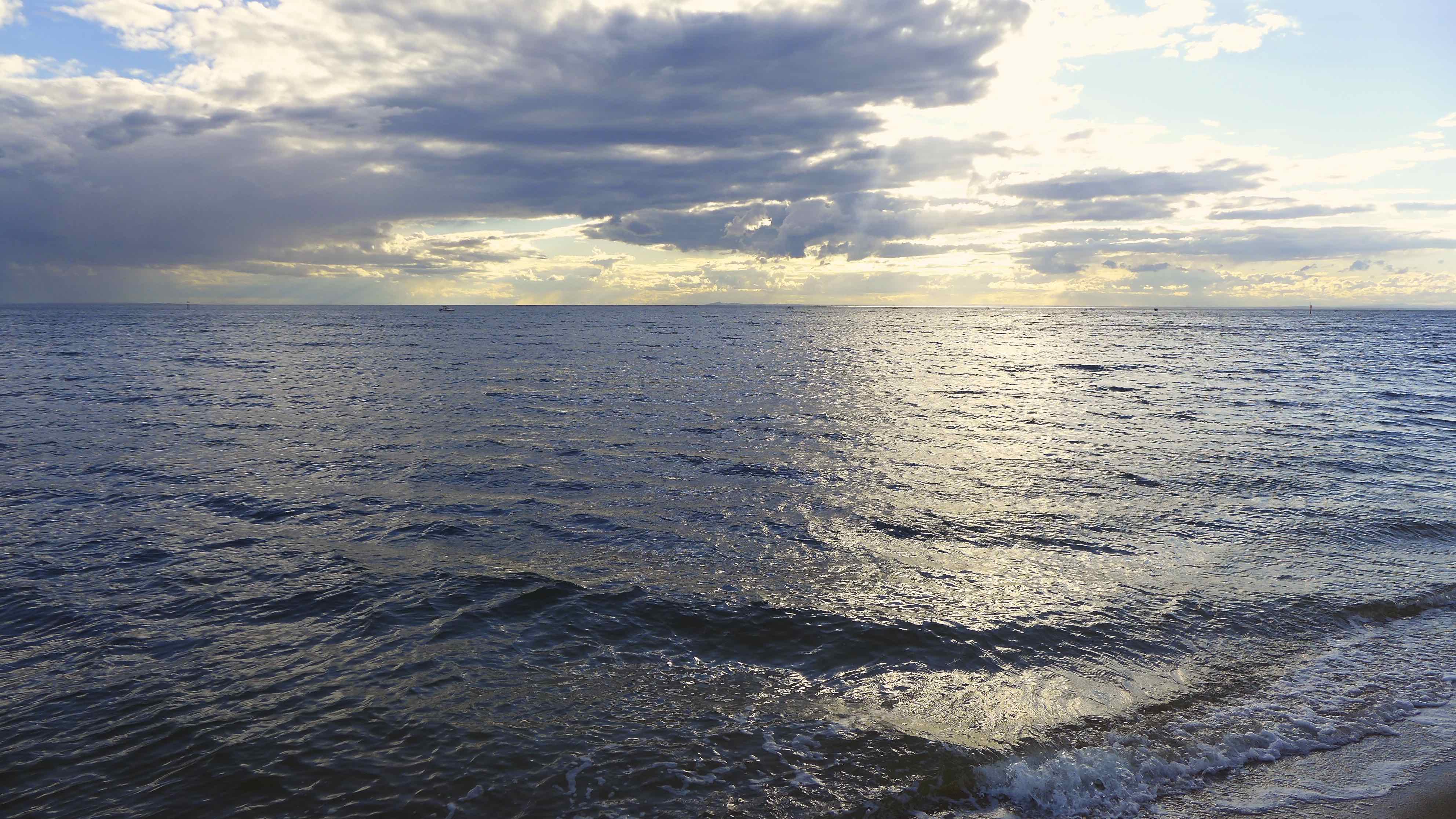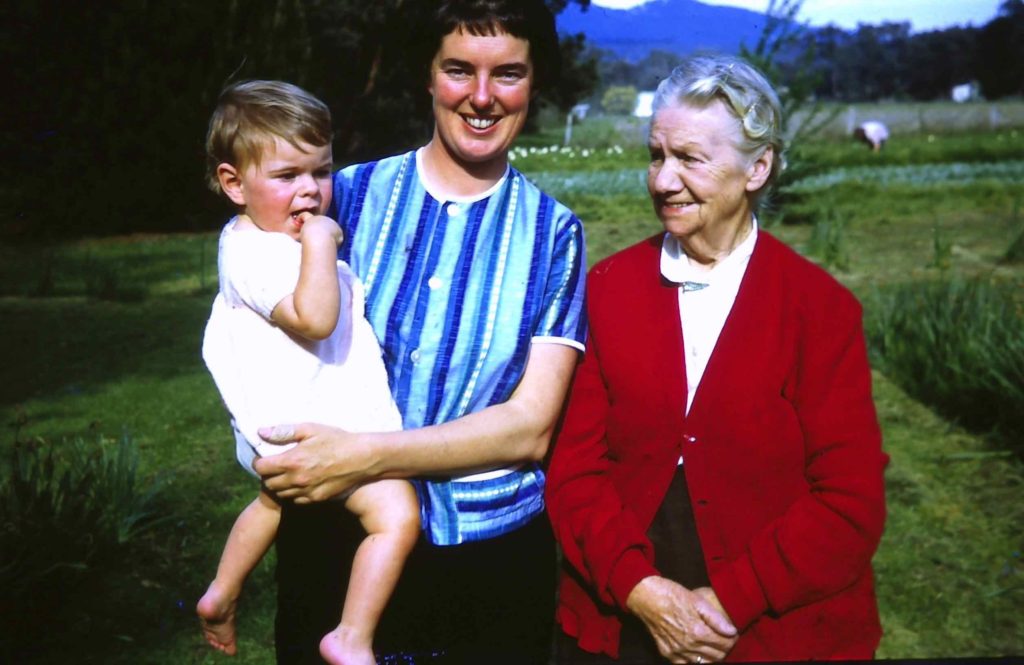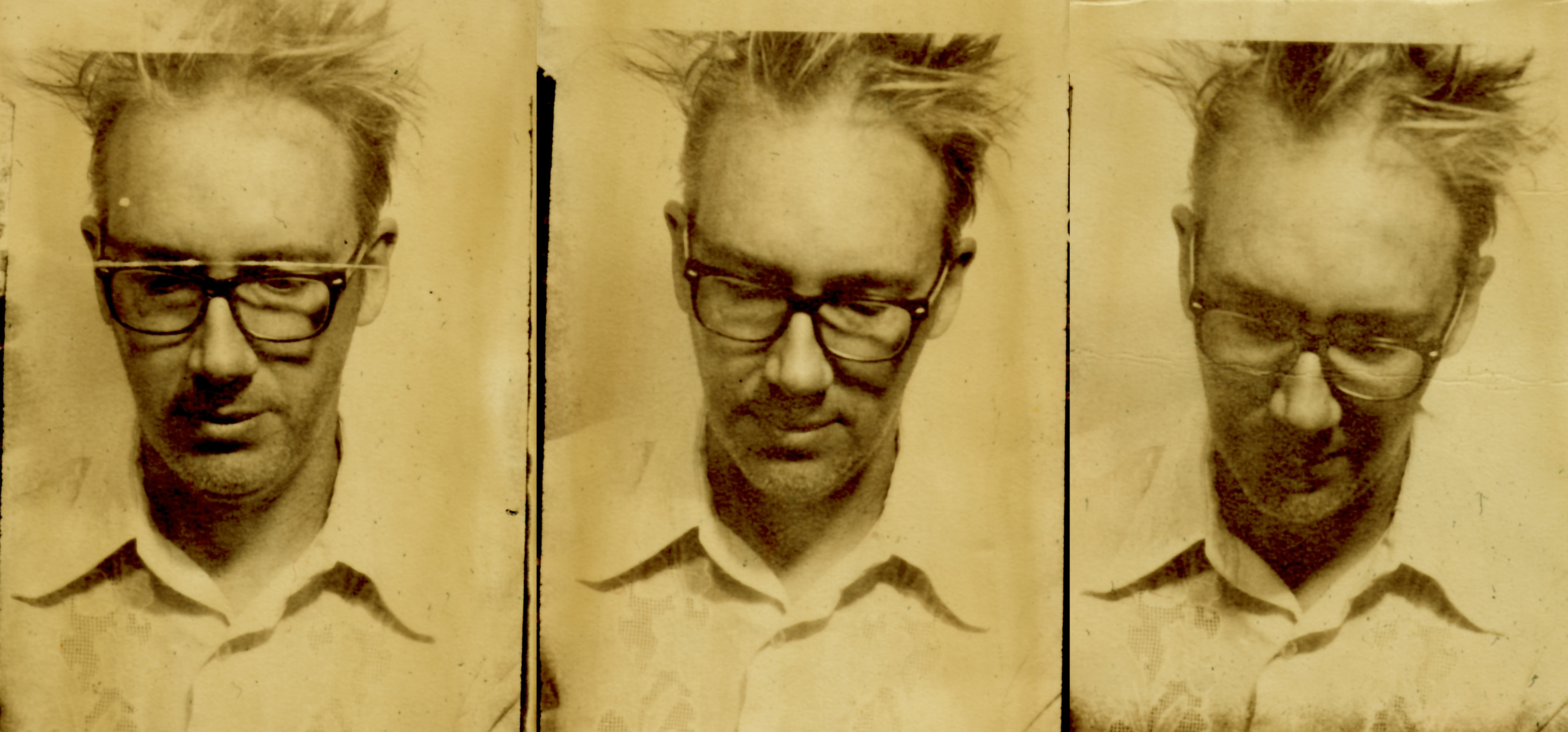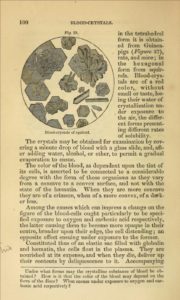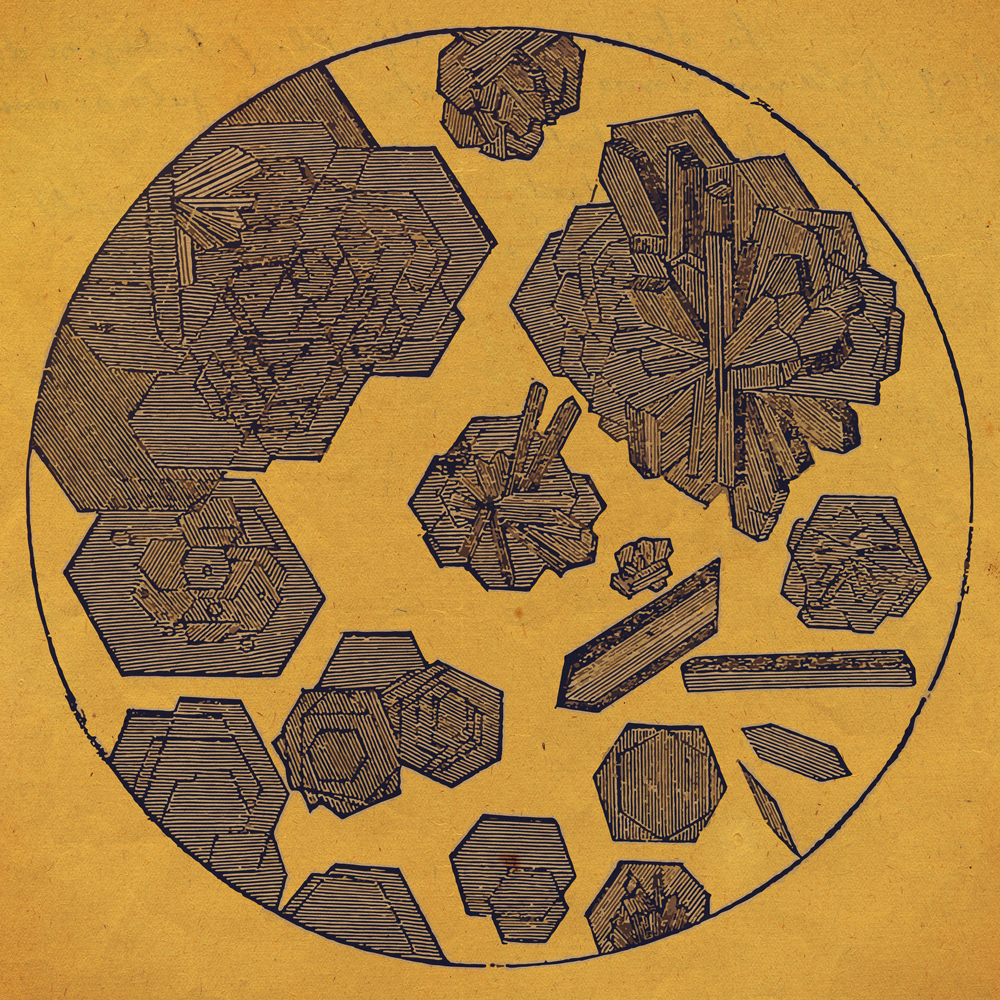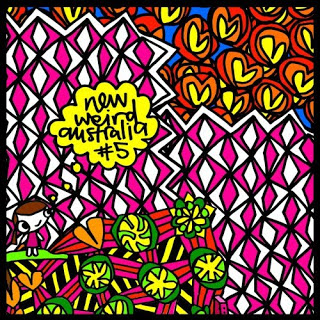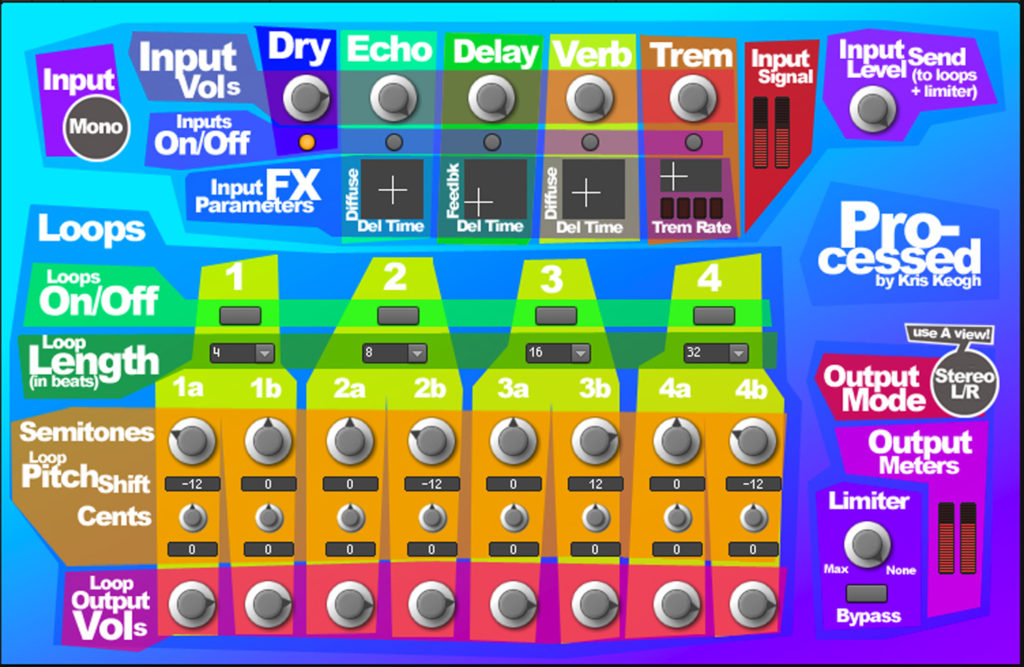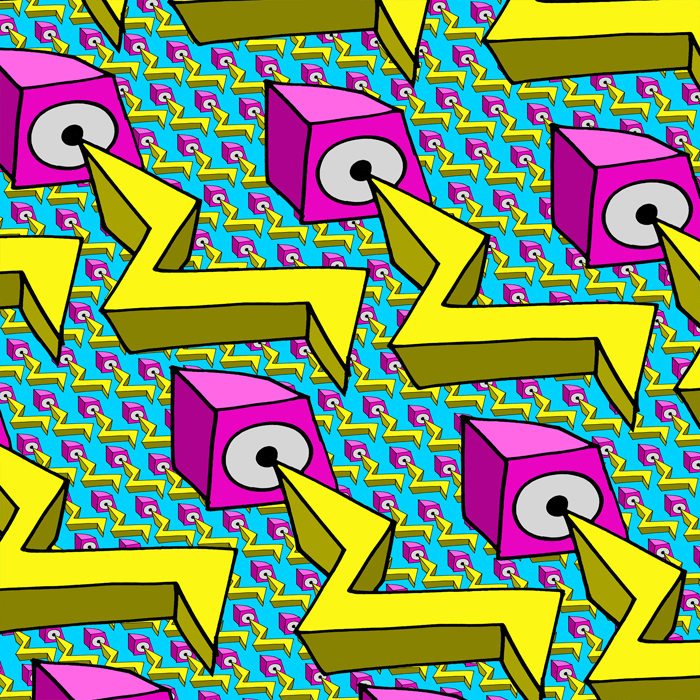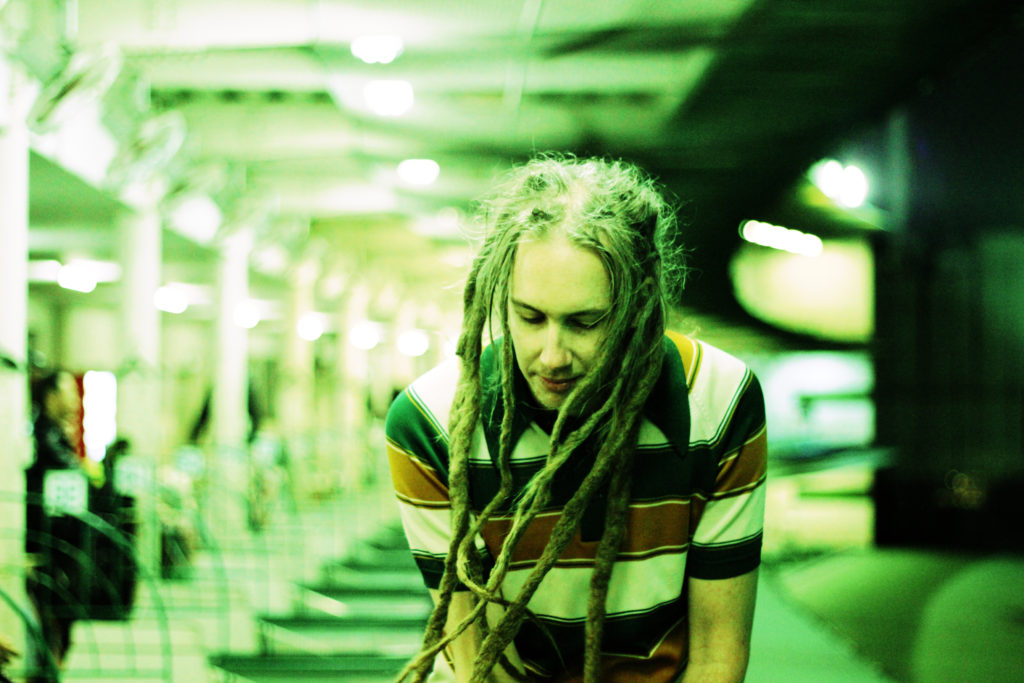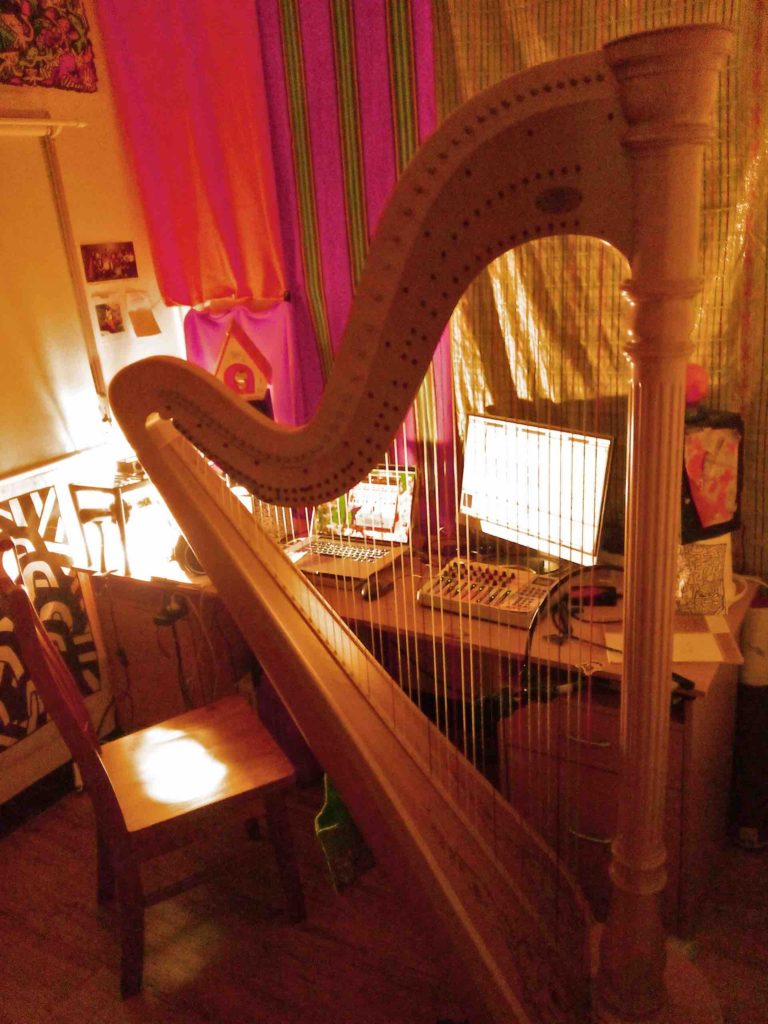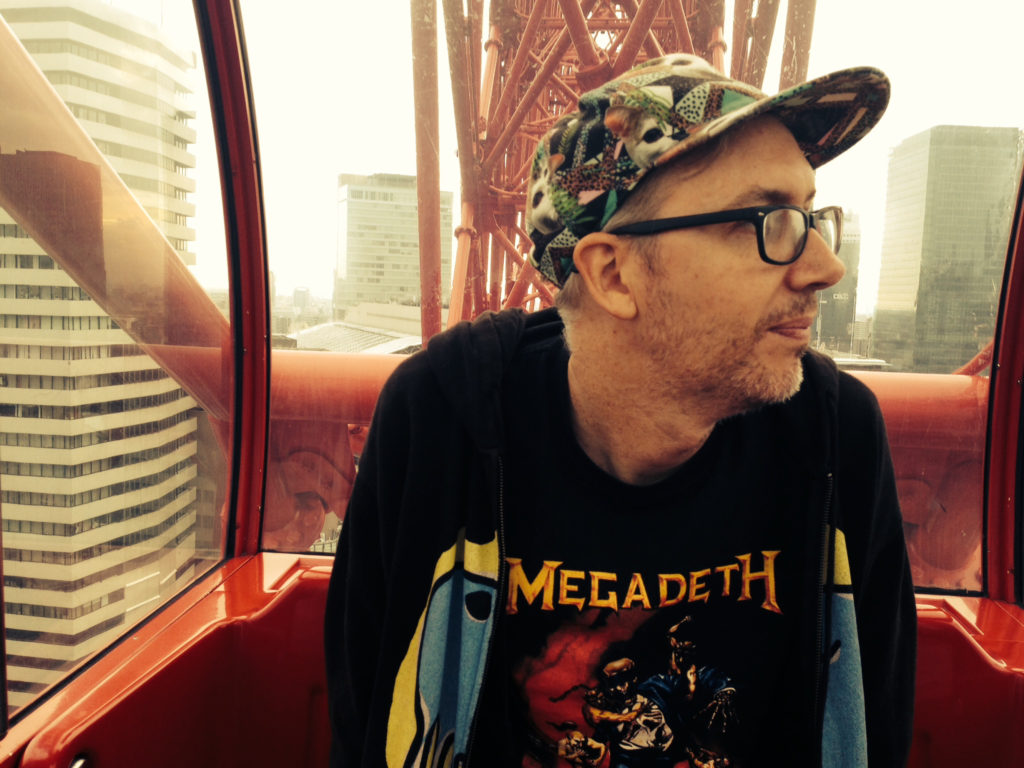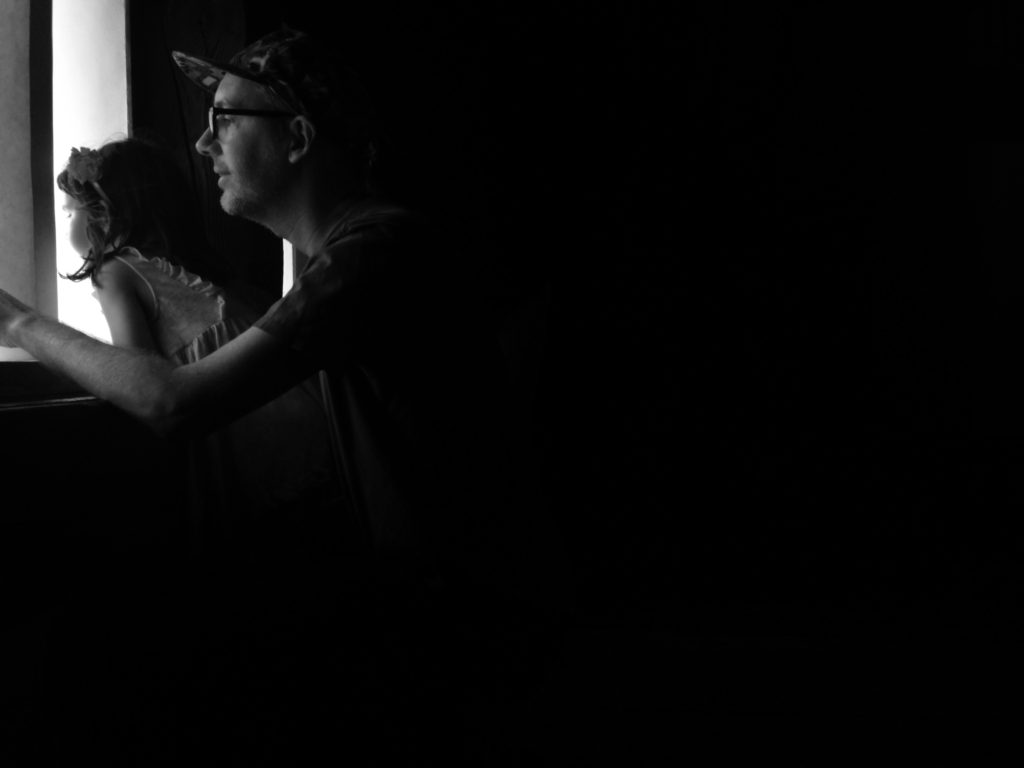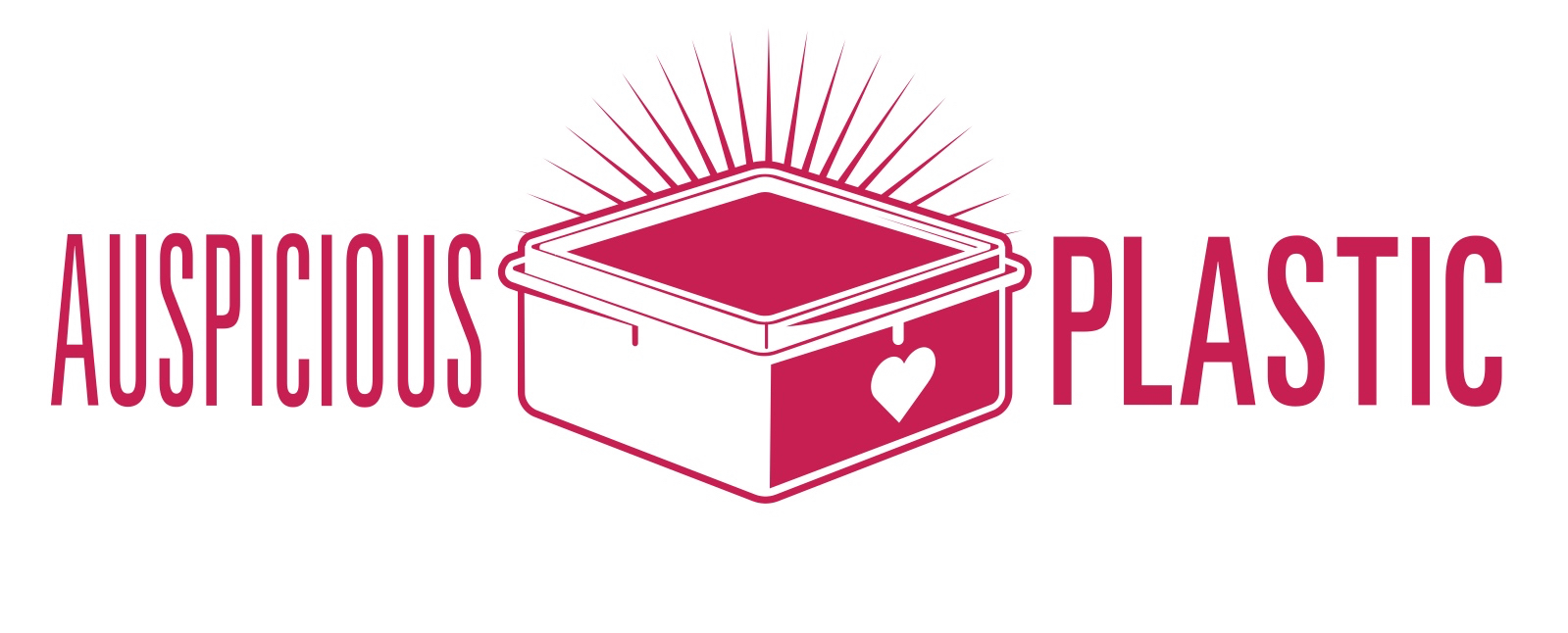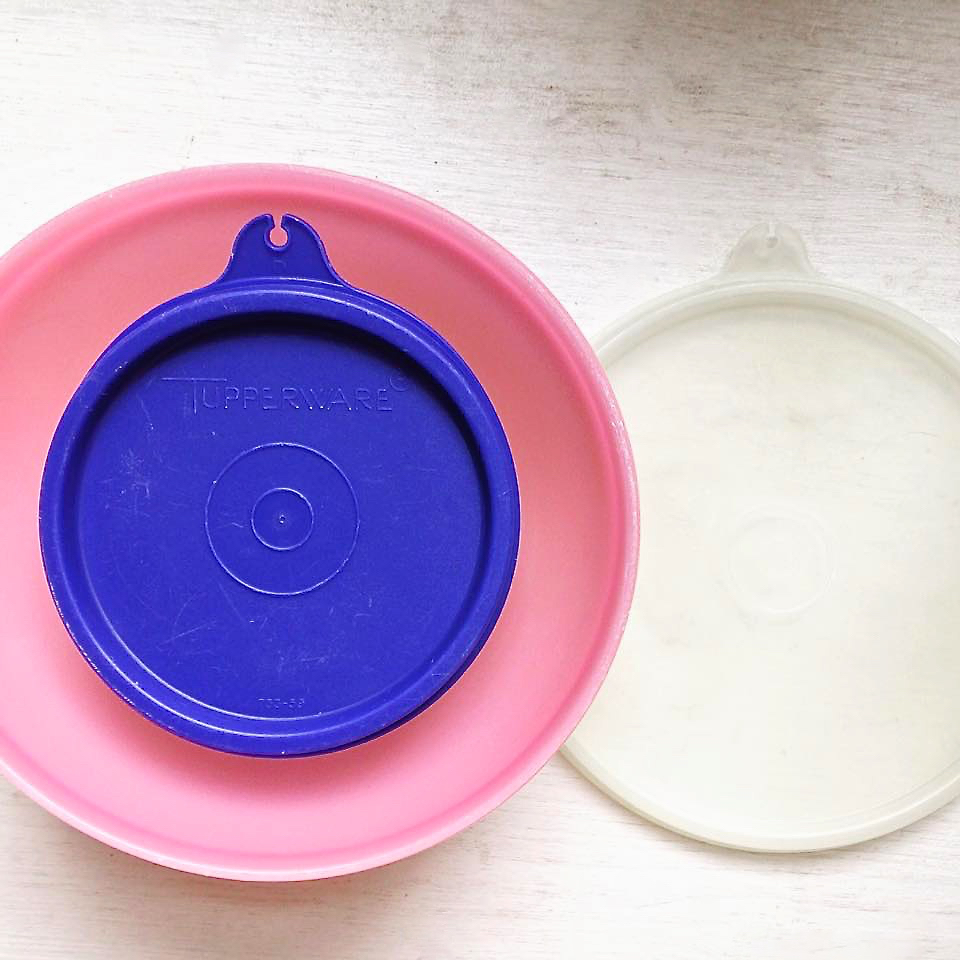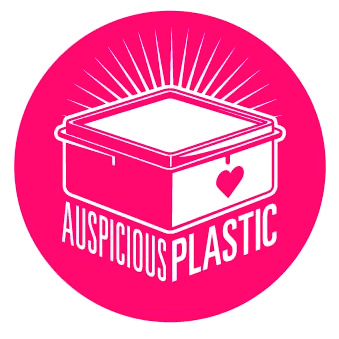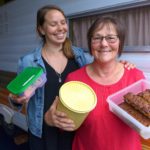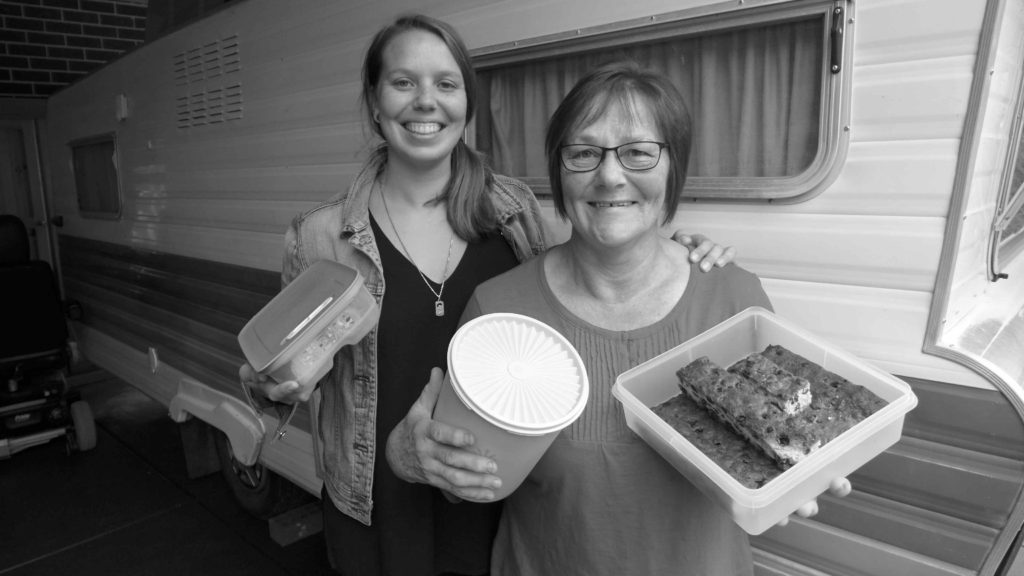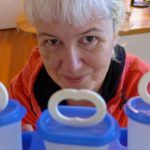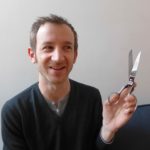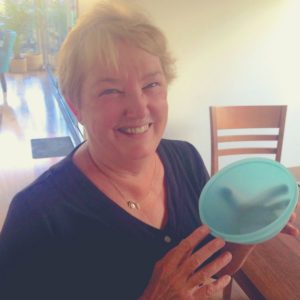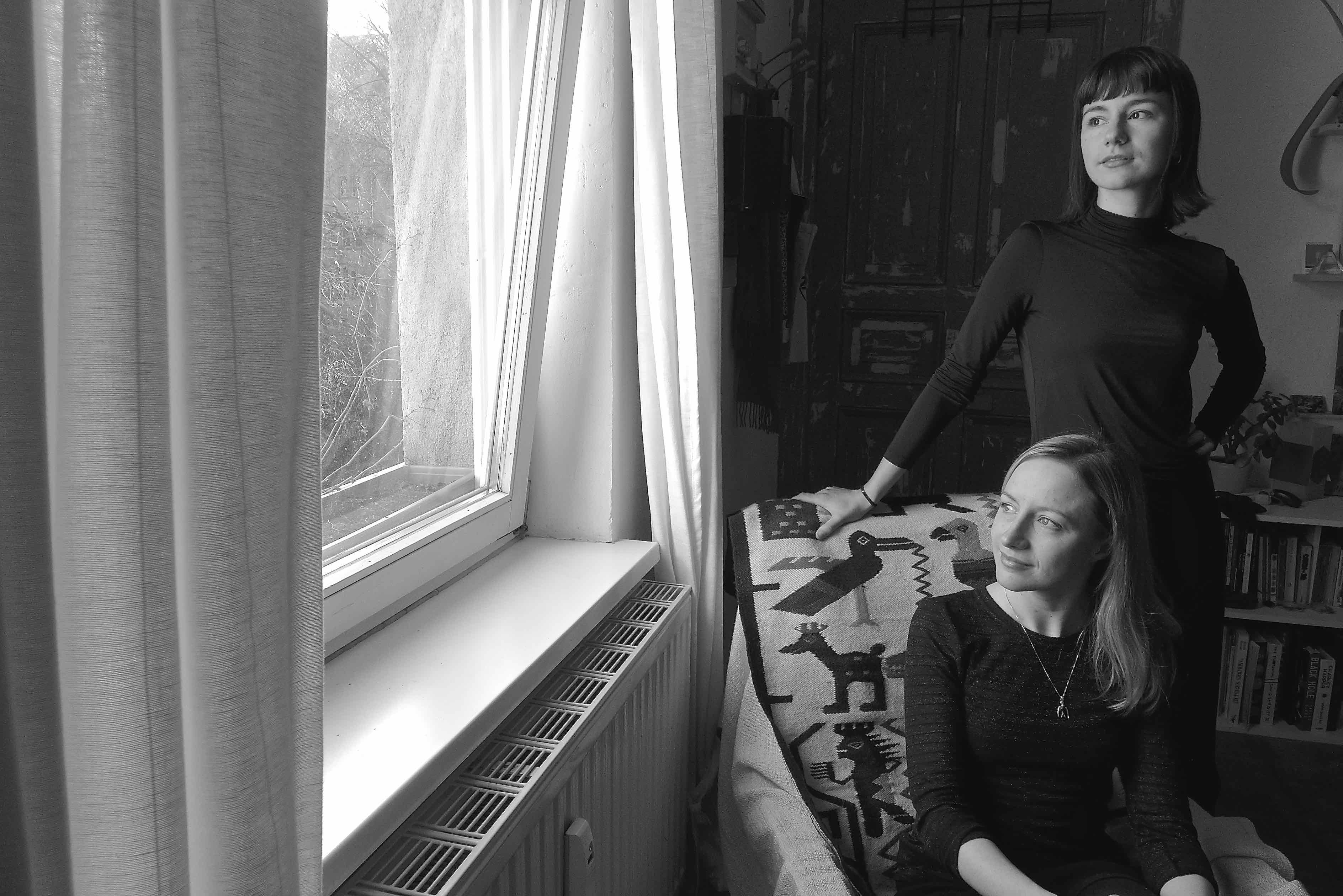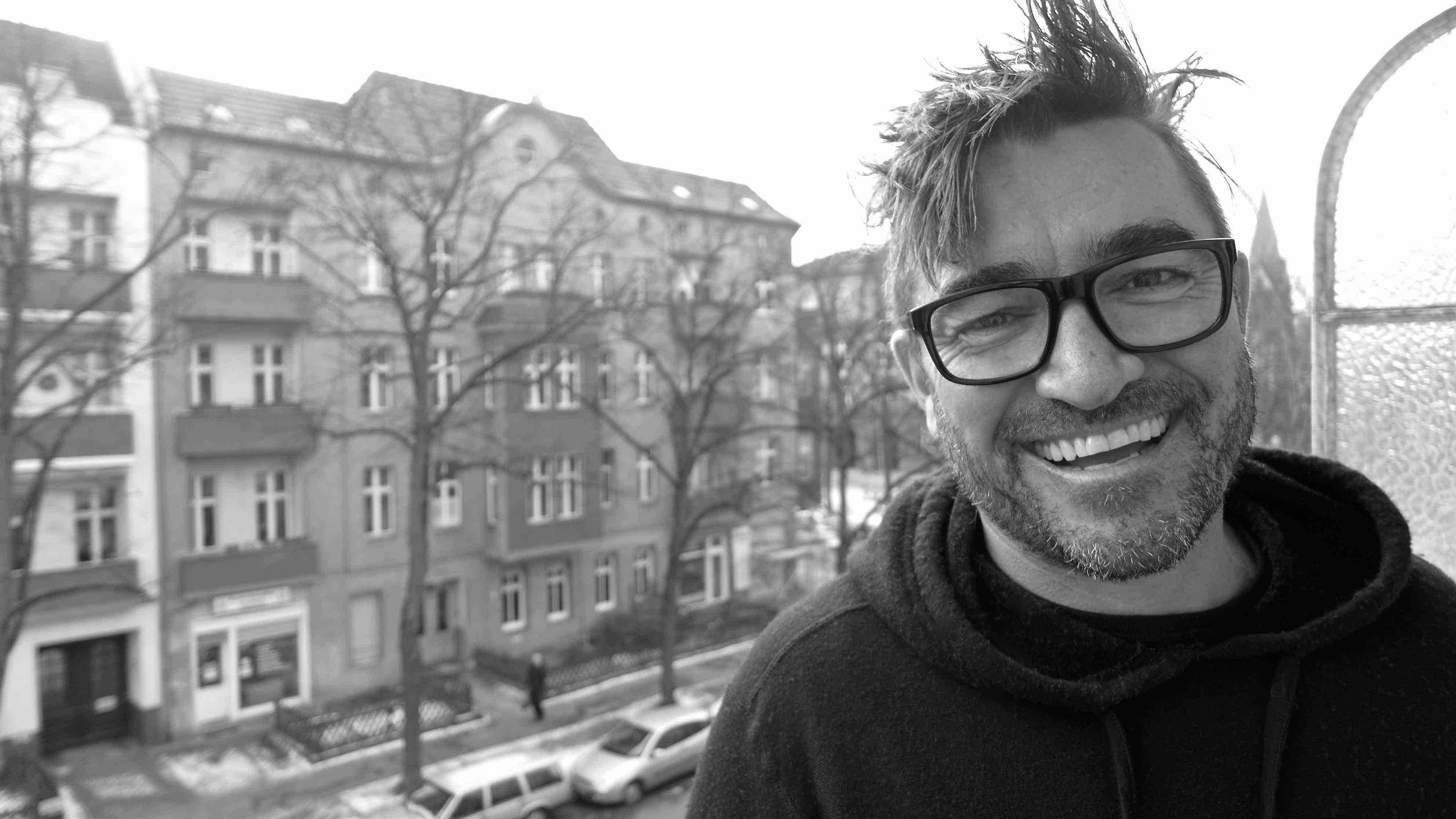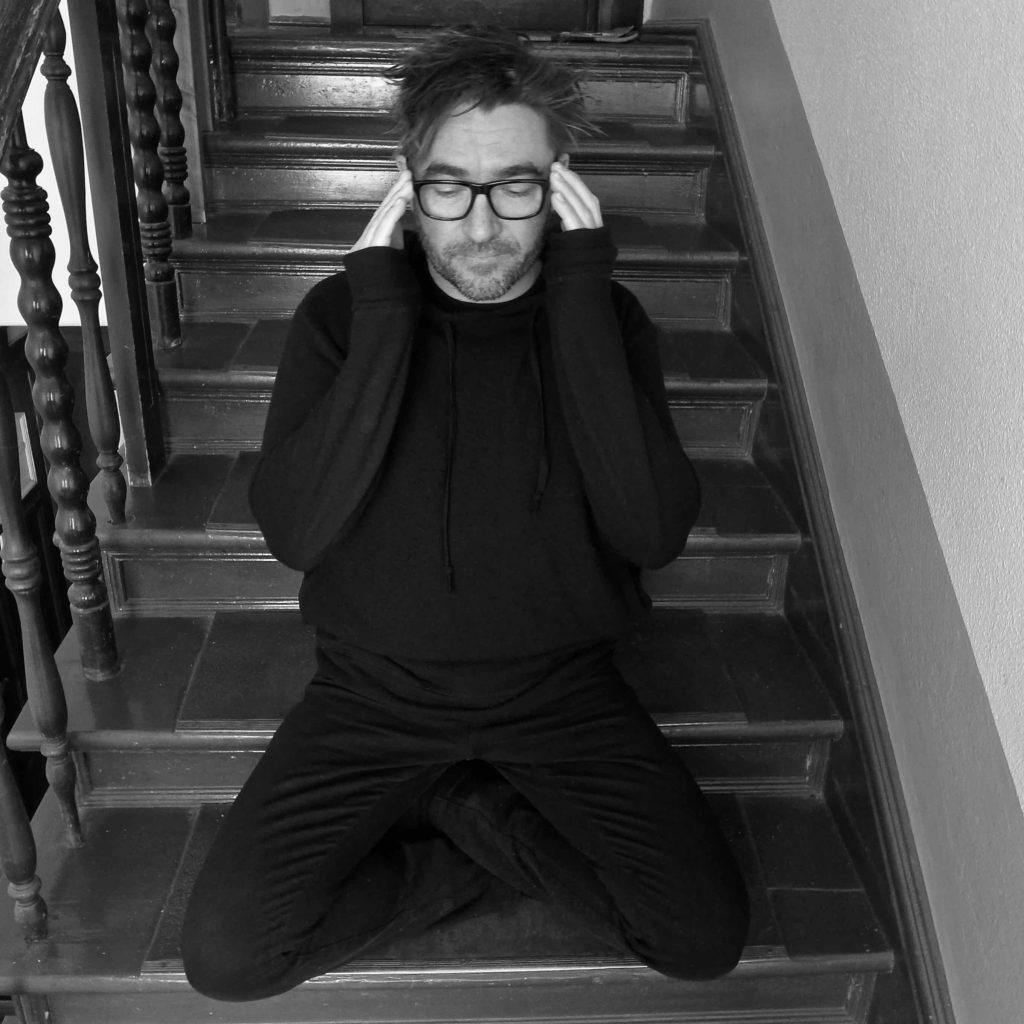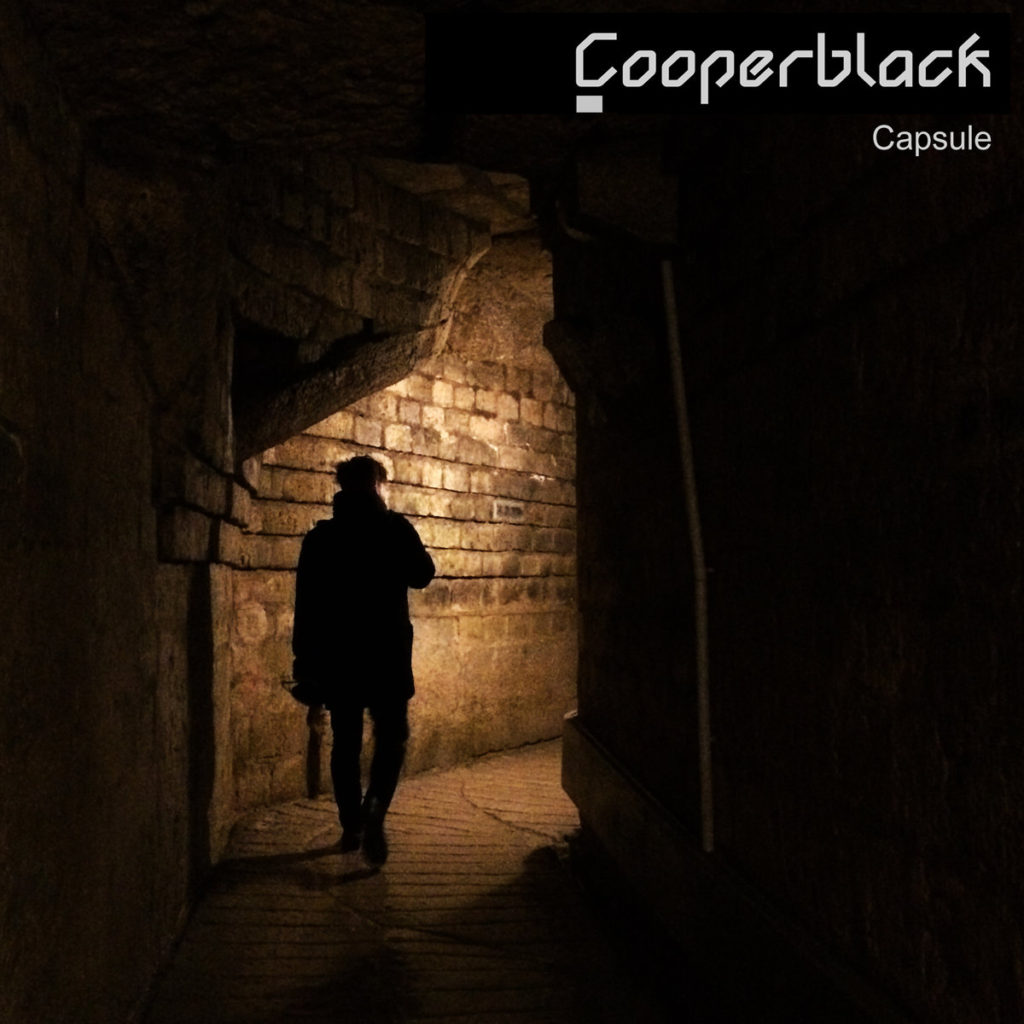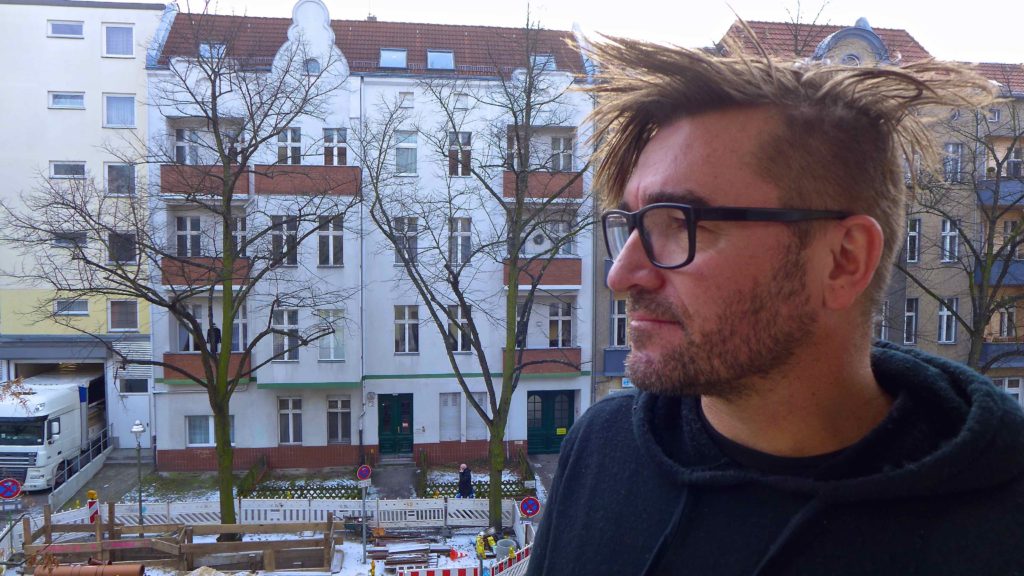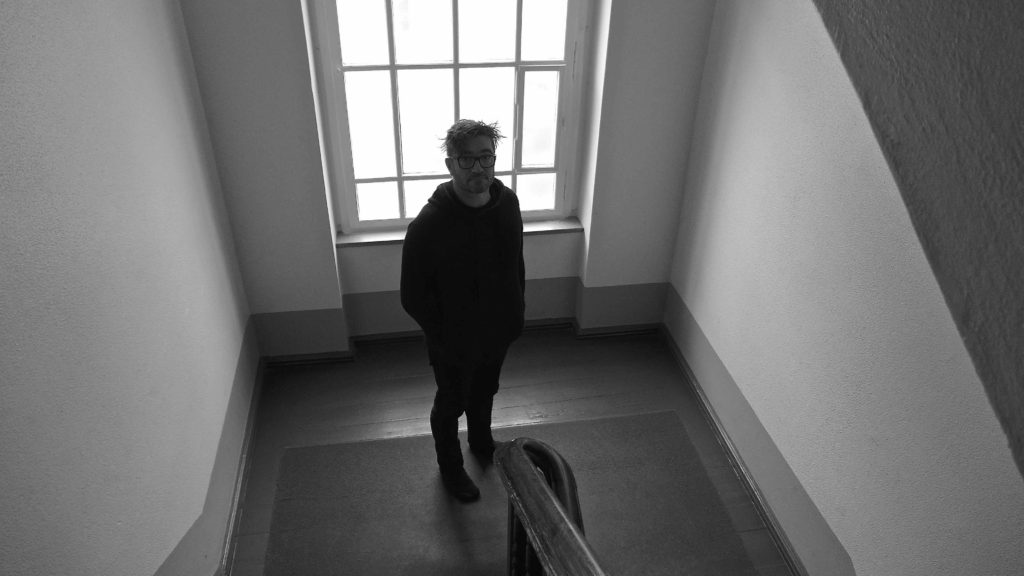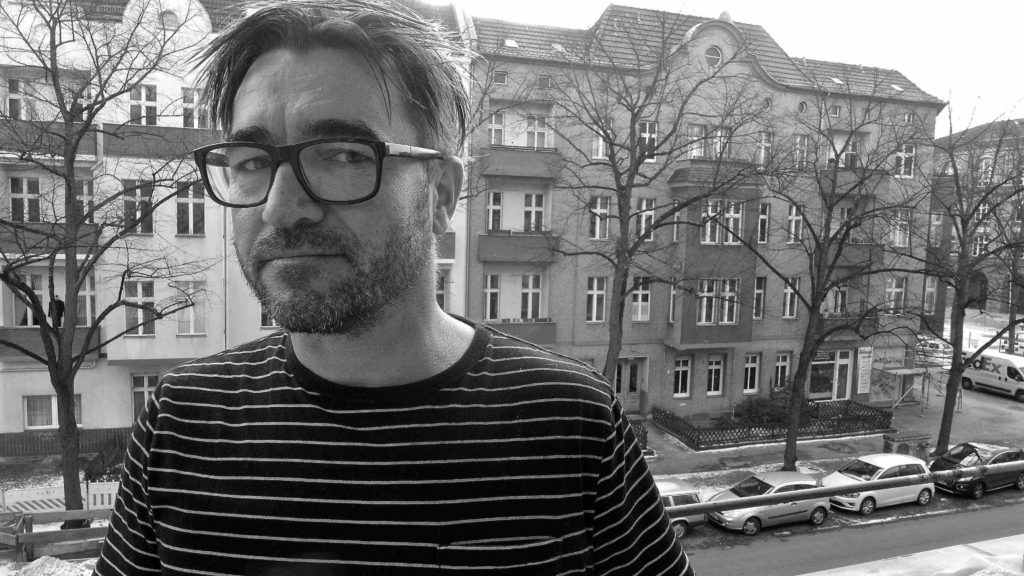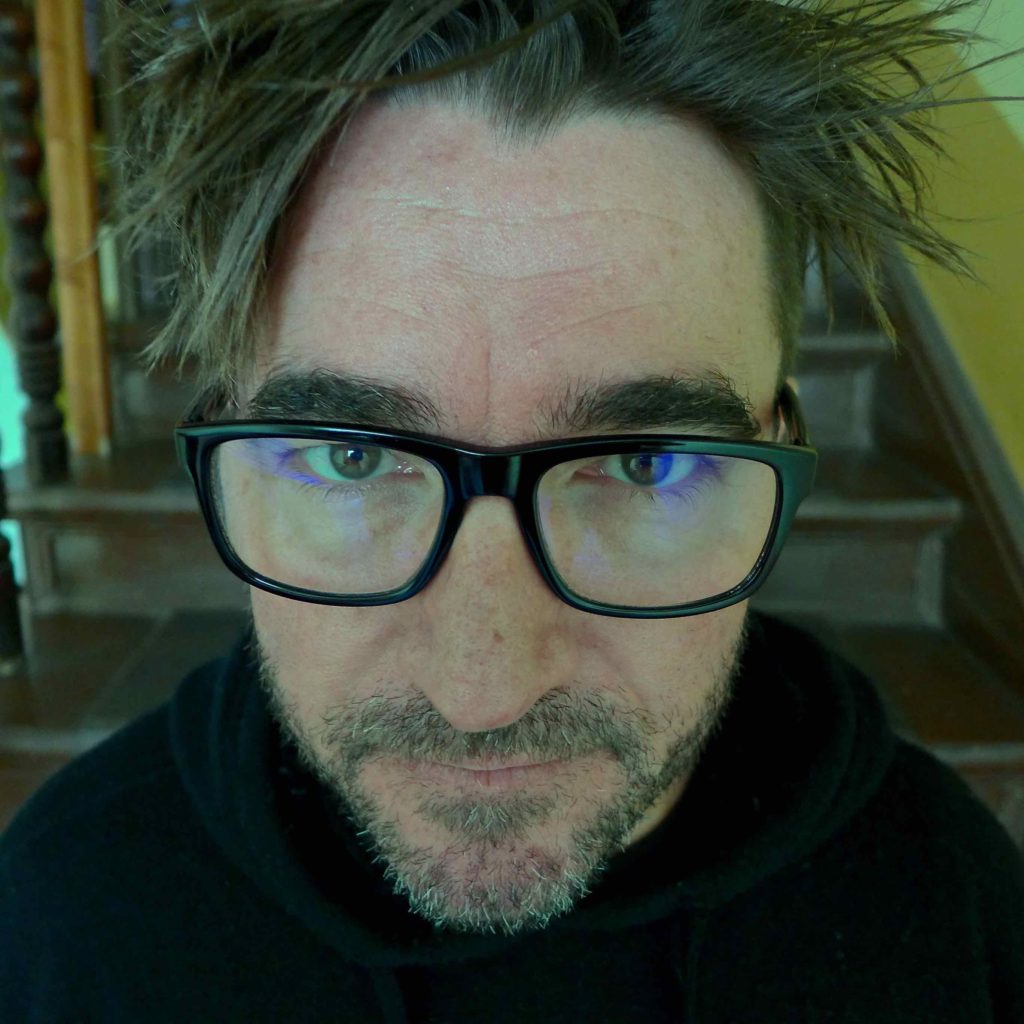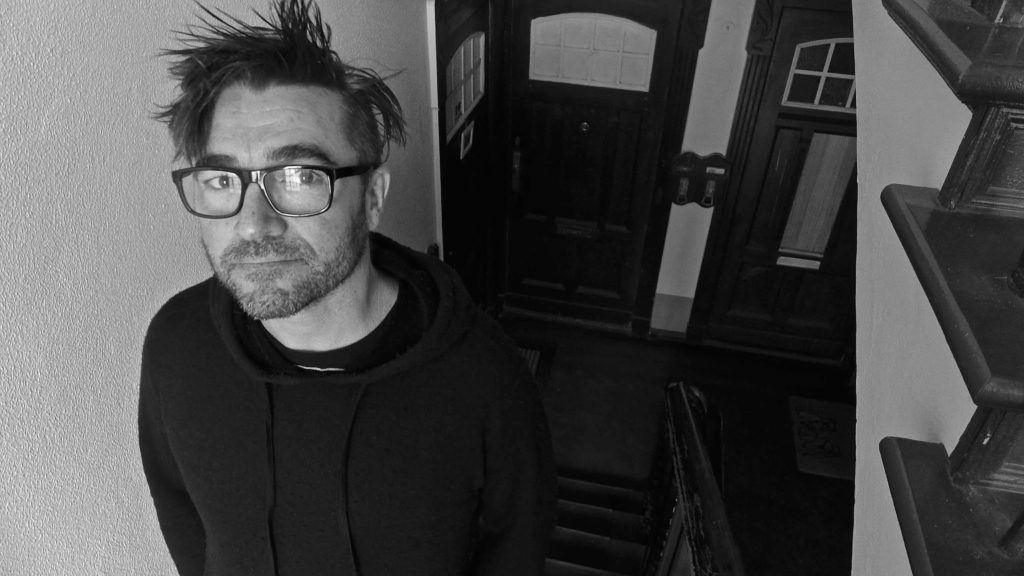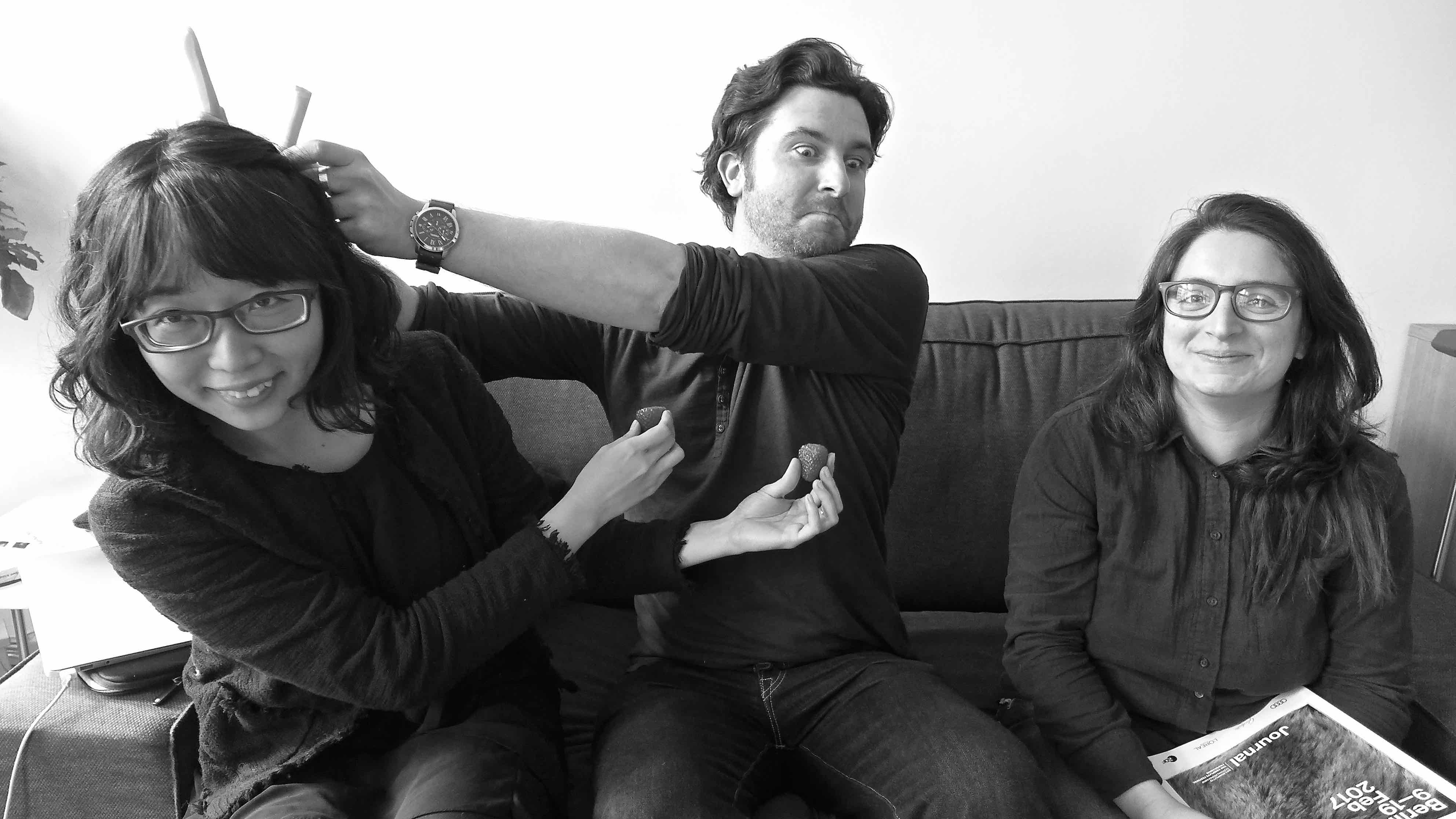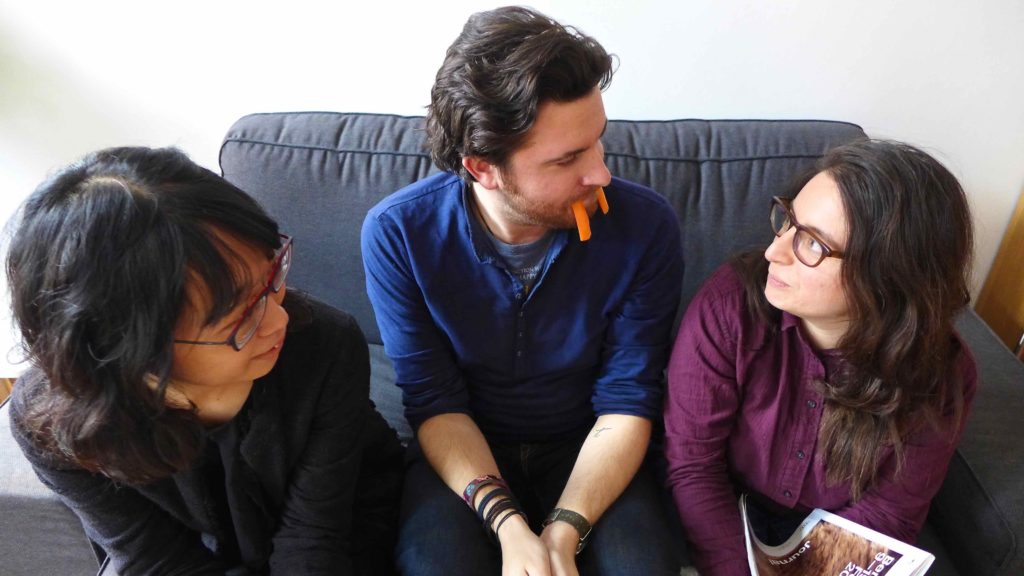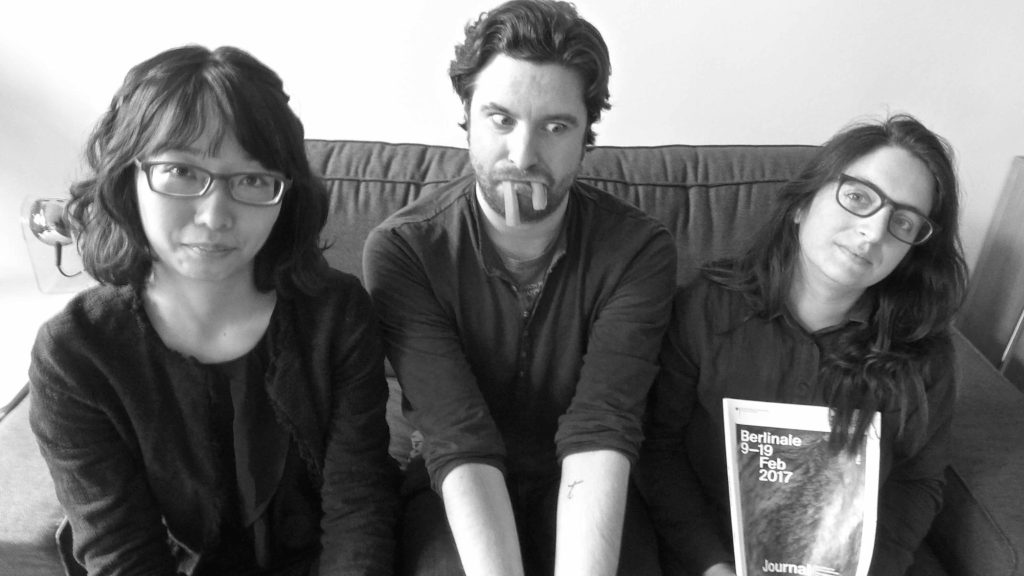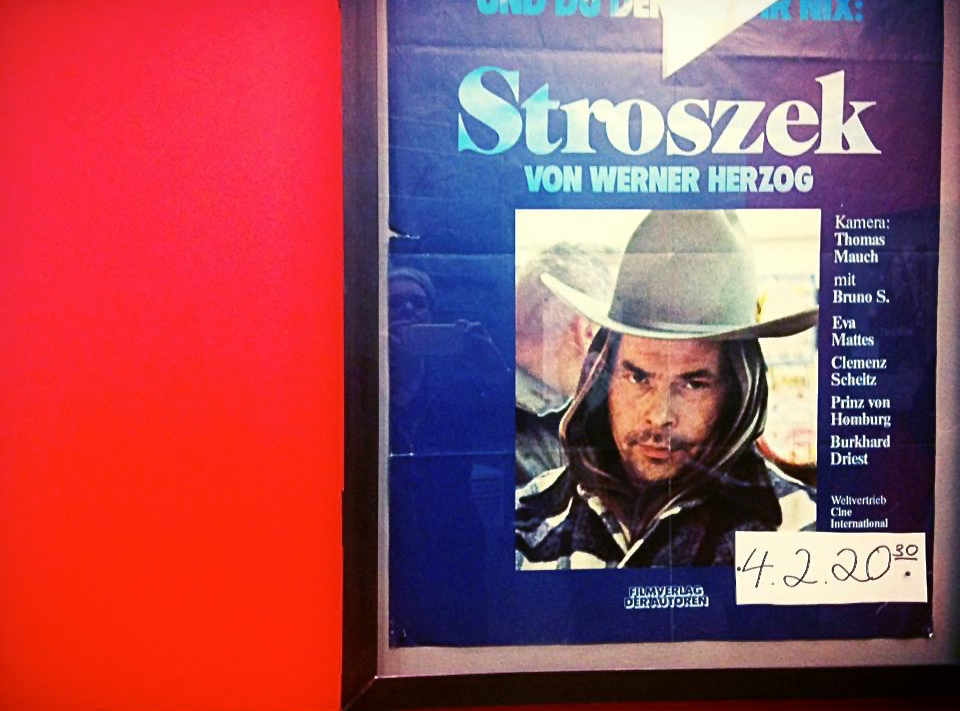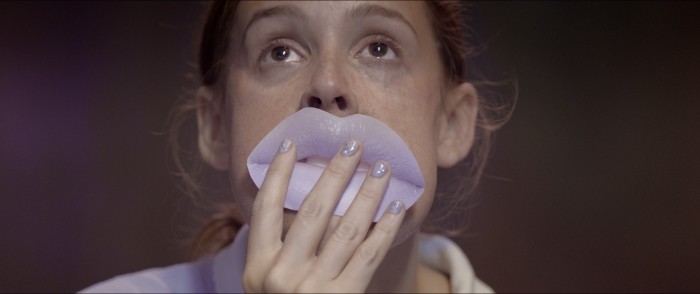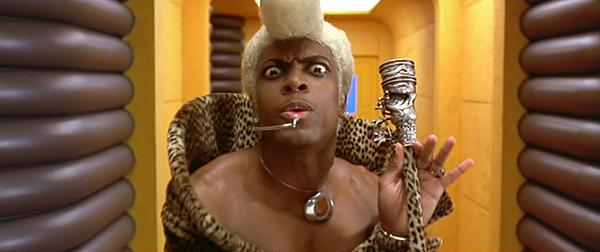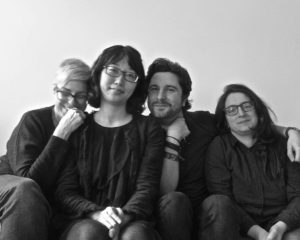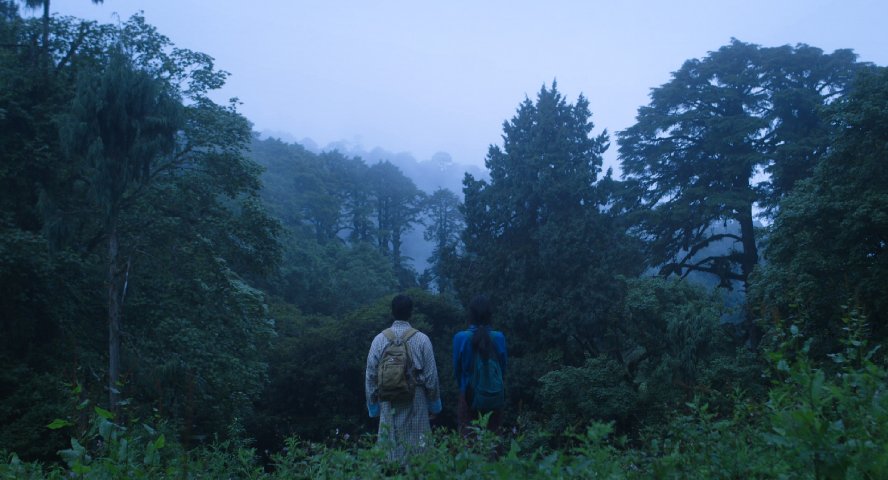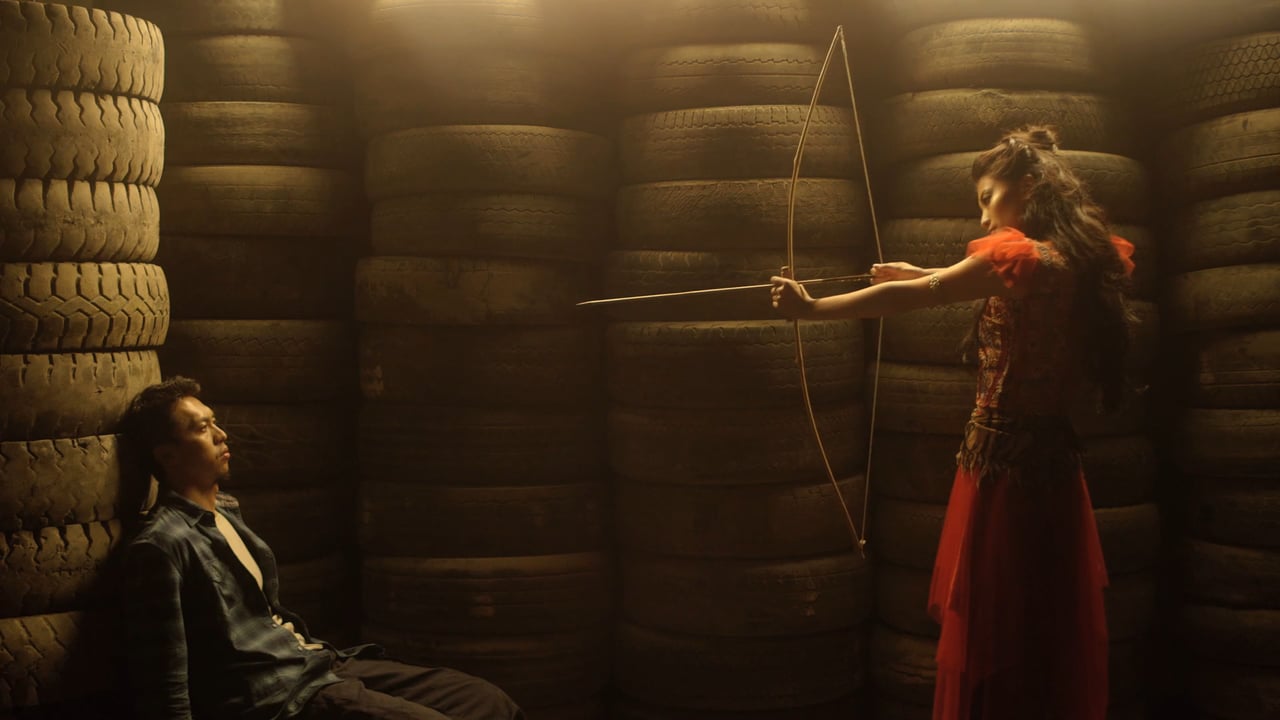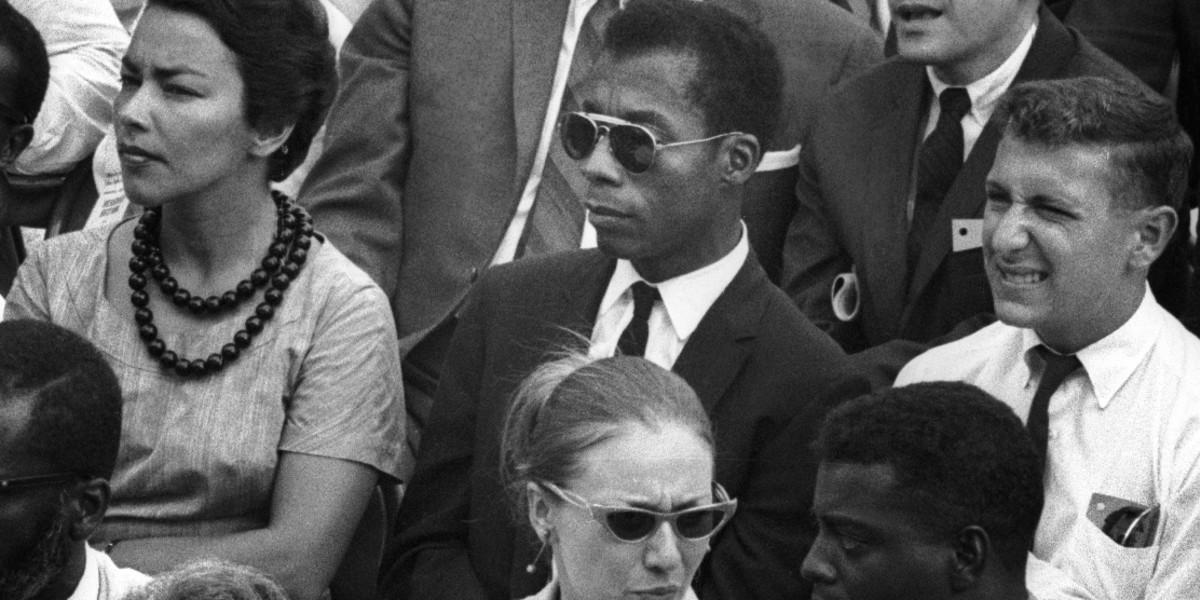History is littered with creative siblings, often in music, sometimes in film, occasionally in literature…
See the Sisters Bronte and Arquette; the Brothers Grimm and Gibb; the Coen Brothers, Baldwins, Wachowskis and Gershwins; soft-pop super-duo The Carpenters, hard-rock guitar heroes Malcolm and Angus. The families Corr, Barrymore, Boyd and Mora.
Then there are my personal faves, Ann and Nancy Wilson from Heart. Seventies AM rock would have been nothing without these sisters, nor their songs Barracuda and Crazy On You. Nothing.
It’s come time to add a pair of visual artist sisters to the list: Lucy Dyson and Molly Dyson. Both are from Australia. Both live in Berlin. And both are starting to leave their mark in a serious way.
Landing in Berlin as a Neu wohnhaft in April 2015, Lucy’s was a name I kept coming across. Sounding terribly familiar I didn’t connect the dots until we finally met a year later, first at an exhibition opening and later at a mutual friend’s ‘going away’. She reminded me we’d first crossed paths in 2003: Lucy was 21 and just out of art school (we also share the same alma mater, RMIT Media Arts), and I was several years into a decade-long adventure as film critic for triple j.
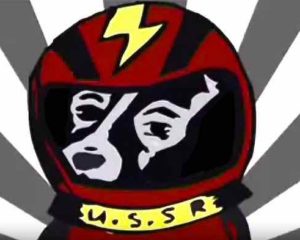
‘Laika – Space Dog’ by Lucy Dyson
I’d seen her beautiful animated short, Laika – Space Dog. It melted my heart and burned itself into my memory, as had the little booklet she’d made to go with it, which I still have to this day.
I’d invited Lucy to do a radio interview with me and later to be a judge on a national shorts showcase and competition I was programming.
Since, Lucy has made a slew of music videos, album covers, prints and animations, now perhaps most well-known for her work in collagism, a form she is passionate about – both moving and still. She’s seriously in-demand as a filmmaker for some of Australia’s (and the world’s) biggest music artists: from Beyoncé, Sarah Blasko and Paul Kelly, to John Spencer Blues Explosion, Goyte, and most recently, former Powderfinger singer, Bernard Fanning.
Finding Lucy in Berlin was a happy accident – so was finding out she had a sister here! One humid Berlin summer’s night we literally bumped into each other at a huge open studio event at a labyrinthine former light factory, now re-purposed as an artists compound. Sweating in the crowd – and having been there for some time – I was about to go. Then there was Lucy. And Molly, who she quickly introduced me to. I lingered and learned she too was an artist equally immersed in her work, only an illustrator…
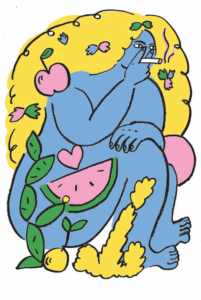
Poetry Is Dead cover by Molly Dyson.
Proficient in German and studying at one of Berlin’s best art schools (plus a Fine Arts graduate from VCA), Molly’s also becoming sought after – as an illustrator, exhibitor and poster artist.
Favoring “simplicity over realism”, she’s had illustrations featured in Yen and Frankie magazines, poster commissions from Mona Lisa Disco and Rhythm Machine, a book cover for Poetry Is Dead, a tea towel for Five Boroughs Melbourne and Covo Sportivo Coffee Lounge in East Brunswick sports her gorgeous custom-design on their coffee cups.
While their formats and methods might differ, both women love their work and the process of working. And while they do miss home they love living in Berlin, counting their blessings to have both 100% family support to be here and to live in a city that, while presenting distinct ‘challenges’ (eg. crap weather for 8 months of the year, gruff natives and an incredibly Orwellian bureaucracy), upholds and supports art and artistic practice in such a vociferous way.
For artists are its lifeblood. Especially if you contribute generous of mind and wild at heart…
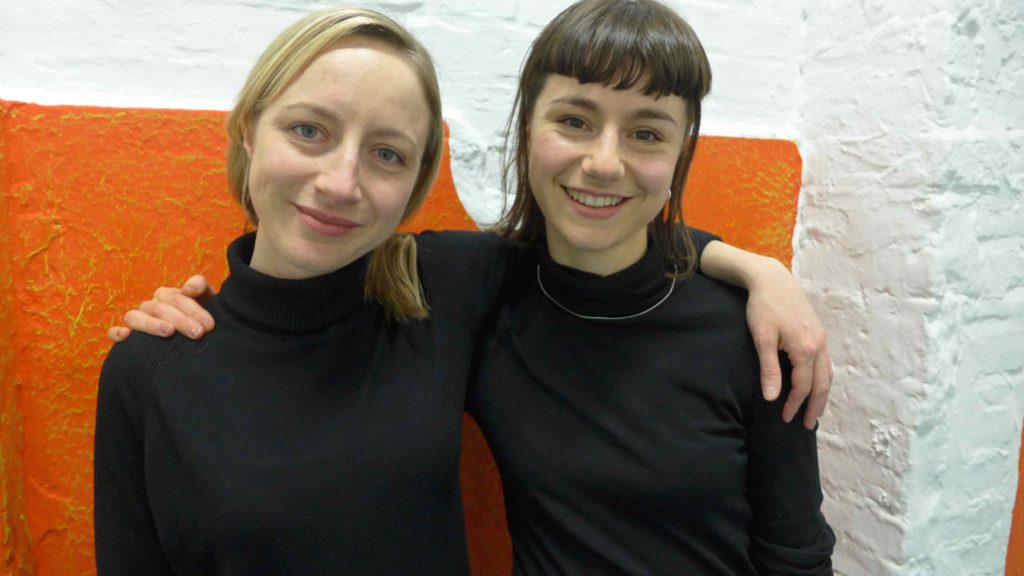
At the open studio: Lucy & Molly. Photo: Megan Spencer (c) 2016
Circus Folk: Both your dad Chris and mum Ann are artists, and your aunty, Cath Dyson, is a documentary maker and writer. Is it fair to say that creativity might be a ‘family trait’? And when did you both realise that creativity was a driving force in your lives?
Lucy: Ha, perhaps there is a sensitivity that has been passed down. I see it on both my mum and dad’s sides of the family – an appreciation for music, film, writing and visual arts – which has led to various [family] creative outputs. I also see it expressed through both extended sides of the family in other ways, be it in personal style, in the home, the children, and just the general feeling when everyone gets together. Cousins will get up to perform, there might be a sing-along… We’re just a big bunch of art lovers!
A far back as I can remember I have been making things. As a child I was always absorbed in drawing or writing stories, or building fun-park extensions for my “Guinea Pig World” corner of the back garden. I was given a lot of freedom and encouragement to express my interests, and a lot of free time come to think of it.
My older sister Marita and I would get really obsessed with our self-initiated projects – some would say nothing’s changed!
Molly: Like most kids I was always drawing. Mum has a good one I did when I was two or three, a completely scribbled mess with the title Molly Saving A Spider From A Fire. (I don’t remember drawing it but I like my sense of narrative – and kindness to spiders!) I also remember drawing naked people and then being embarrassed and scrunching them up when I was about 5 or 6. Then of course I went through a stage of only drawing people with Simpsons’ style eyes!
I think it was always something I felt that I was good at; I had trouble with maths and spelling and sport and learning the piano. So drawing and making things fitted best.
CF: Molly, what ‘draws’ (sorry!) you to illustration? Is it an enjoyable process for you?
Molly: As a teenager I made a lot of ‘zines and always tried to make comics, but found it hard to finish a page of sequential drawings. I still do. I studied art and found it hard to make things without a connection to narrative (the way illustration can have). I also love taking someone else’s story or idea, and bringing it into a visual realm or interpreting it.
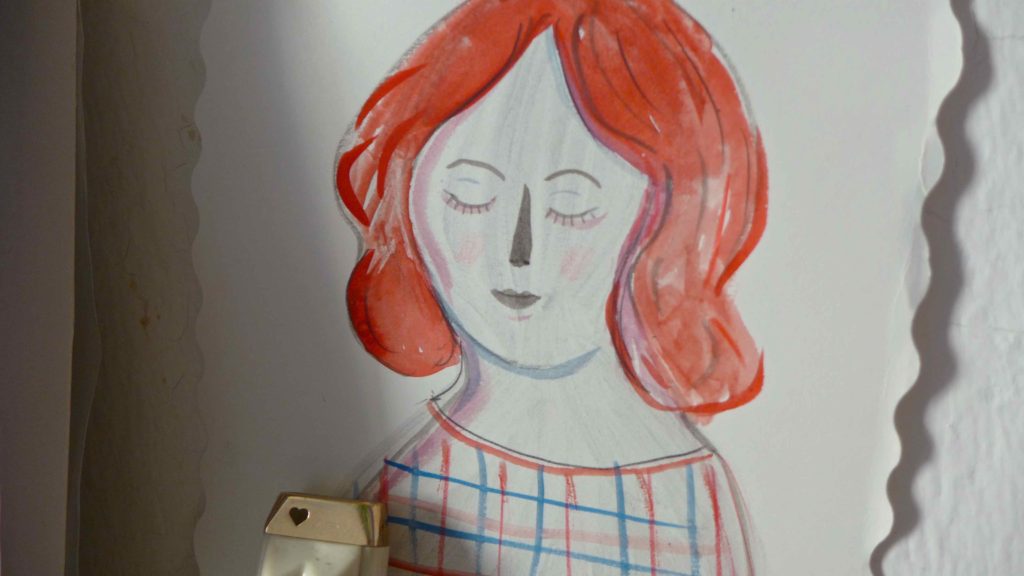
Illustration by Molly Dyson. Photo: Megan Spencer (c) 2016
I love making posters too, it’s exciting for me: they get to go out there into the world and be connected to an event or an idea. I like illustration maybe because each project has a definitive end point most of the time, where as I felt artwork sort of goes on and on and has a life of its own after you make it or install it. I think I get satisfaction out of making things that have some definite purpose: that ‘sense of purpose’ is probably the most enjoyable part of the illustrative process. I’m not saying that art “has no purpose”; it’s just not that often defined by a brief or specific job request.
CF: Lucy, you and I first met when you were an animator just out of art school. We ‘communed’ over your beautiful, sweet short film, Laika, Space Dog. How and when did you move from animation to collagism? Or was it the other way around?
Lucy: Ever since I was a child I have always made collages, cutting up old encyclopedias – and family photographs! So when I started at Media Arts I was interested in animating these collages. The Laika film was an exercise in how to use Flash software, so part of that learning meant I used my own sketches.
I never consciously decided on animation or collage; they have always gone hand-in-hand for me. The subversive nature of collage has always appealed to my sense of humour: making new worlds, escapism, being left alone to work out ideas that fail when I try to put them down in words…
Also developing a sense of self through my work, as I often feel unsure about where I fit. I don’t make commercials or commercial music videos or short films, so I don’t entirely fit into the animation world or the big budget music video/commercial world. Or the design world – something that’s always very obvious to me when I attend film festivals or design conferences!
I also don’t really belong in the contemporary art world; I’ve somehow ended up carving out own very independent thing. In animation it’s very satisfying being able to control very specific elements, when in life there is so much one can’t control…
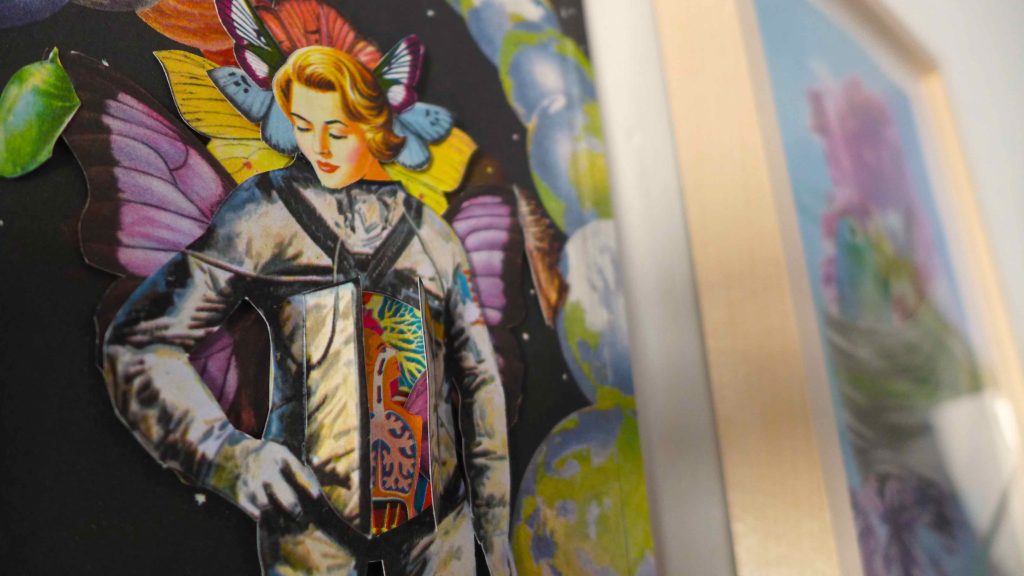
Collage by Lucy Dyson. Photo: Megan Spencer (c) 2016
CF: Molly – what do you like to draw? And how would you describe your ‘relationship’ with drawing?
Molly: I like to draw people but also find it hard to settle on a particular thing. It’s still hard sometimes to think of “what-to-draw”, that’s why I do quite like having requests and specific jobs.
I would describe my work as some kind of quest to make a line work in a really particular way. I guess I’m on a quest to perfect that feeling of a single line doing its thing and making a shape. I really like effortless-looking doodles that sum up an object or space in swift movements, reductive impressions of things. I don’t have much interest in figuratively representing things.
I like to work some “personality” in there, but I guess I am always reducing my style. I also love printing, probably for that similar “reductive” element. I like working within some restrictions – such as colour and material – because it forces me to focus on one idea rather than being overwhelmed by too much choice.
I prefer drawing on paper to working digitally, and have been completely sucked into the Instagram cycle of making something: posting it and waiting for the ‘likes’, which has changed the way I work.
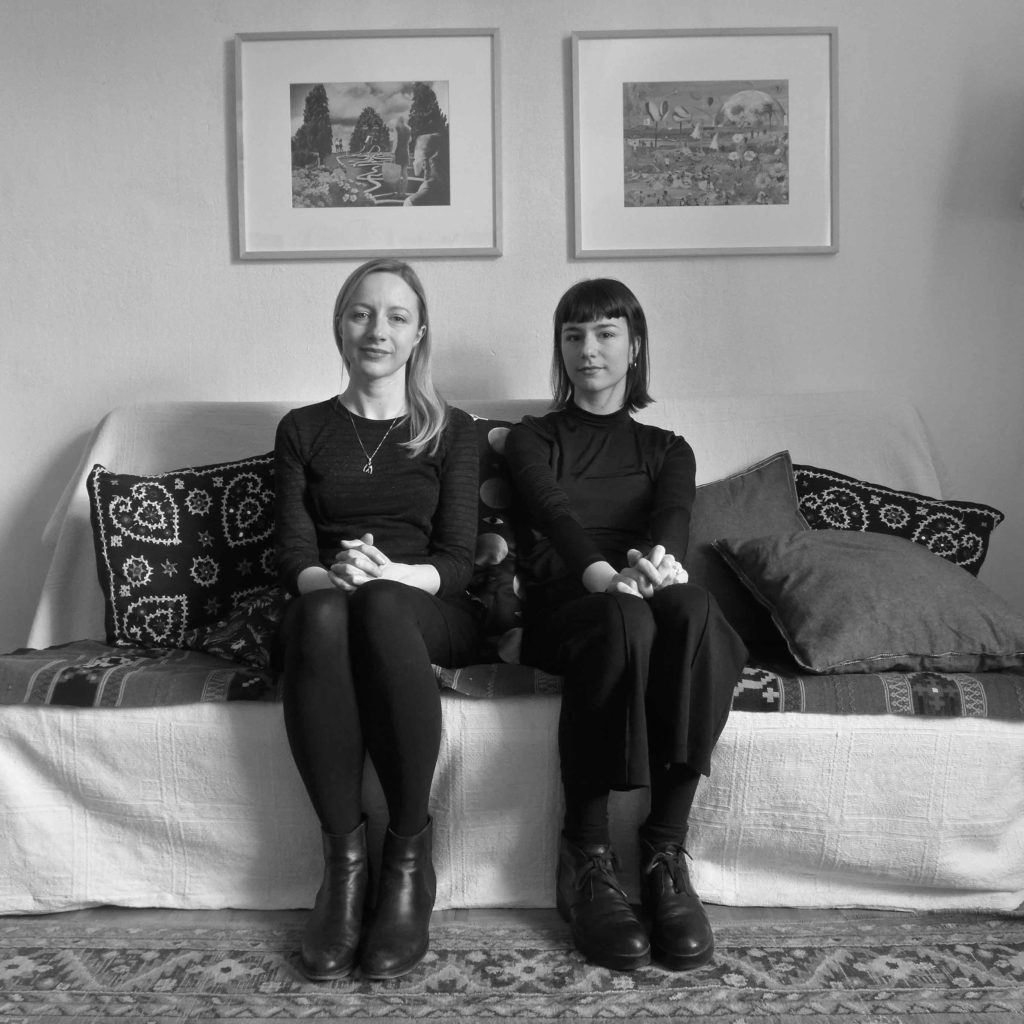
Sisters on the sofa: Lucy & Molly. Photo: Megan Spencer (c) 2016
CF: Sisters in art, now sisters in Berlin: could you please give us a snapshot as to how you both came to be living and working in Berlin?
Lucy: I moved to Berlin in 2011 after two fun but kind of difficult years living in London. I met some great people there and made music videos while also working in a bookstore. When I had to leave London (because my visa was up) I was annoyed: it had taken two years to feel that I had just about adjusted to the city, and then it was time to go!
So, with my boyfriend at the time, and everything still packed up in Melbourne, I headed to Berlin. While I was in London I had visited friends living there and I had thought it was such a great city. Molly came to visit me a year later and got sucked in too!
Molly: I came here on holiday with the vague intention of staying for a year or so since Lucy was already there, and I had heard all about how fantastic Berlin was. So I did stay. I met a European boy, and went back and forth between Melbourne and Berlin for a few years.
Initially I tried to make it work as a freelance illustrator (while also working several jobs, as a nanny, in cafes, the usual…) Eventually I got a full time job which had its ‘positives’ (regular income and health insurance) and ‘negatives’ (40 hours a week standing in a 7×5 metre store selling notebooks to people…) Now, thank goodness, I am a student, which is a 1000% improvement on being a full time employee. I’m still working part time though!
CF: What do you like about being here in Berlin? Does it afford you opportunities that staying in Australia might not? And do you feel lucky and/or inspired to be here?
Lucy: As a self-employed artist the fact that I can support myself and live comfortably on my own in a lovely apartment and have a studio space feels lucky: it allows me time and space for the work that is most important to me. And the fact that I can so easily obtain a visa to live and work here makes me feel extremely lucky.
It goes without saying that the museums and galleries are great, that there is always something interesting to attend – endless art and film lectures, events and festivals, on all levels, on all subjects, happening everywhere. It is so inspiring.
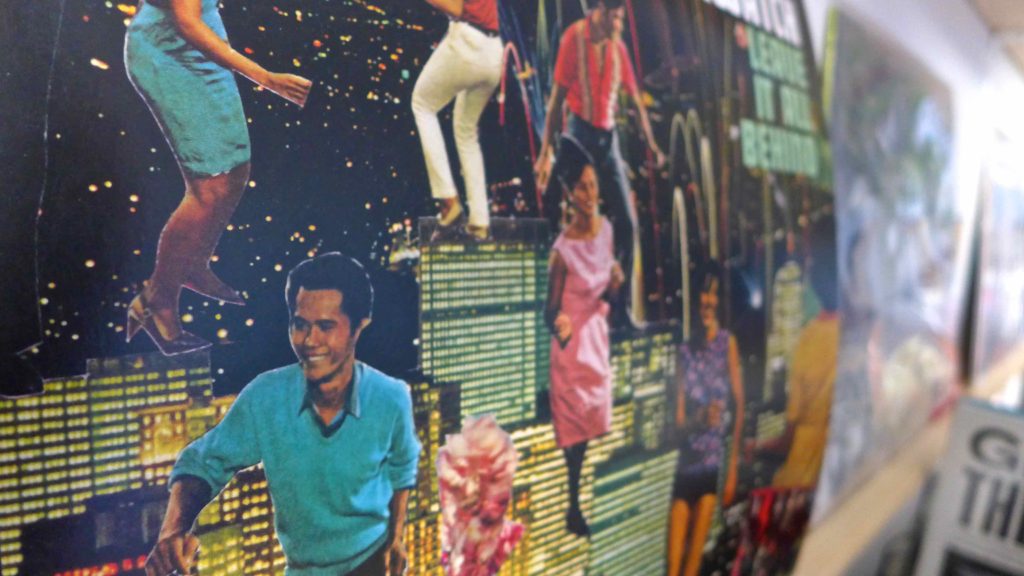
Collage by Lucy Dyson. Photo: Megan Spencer (c) 2016
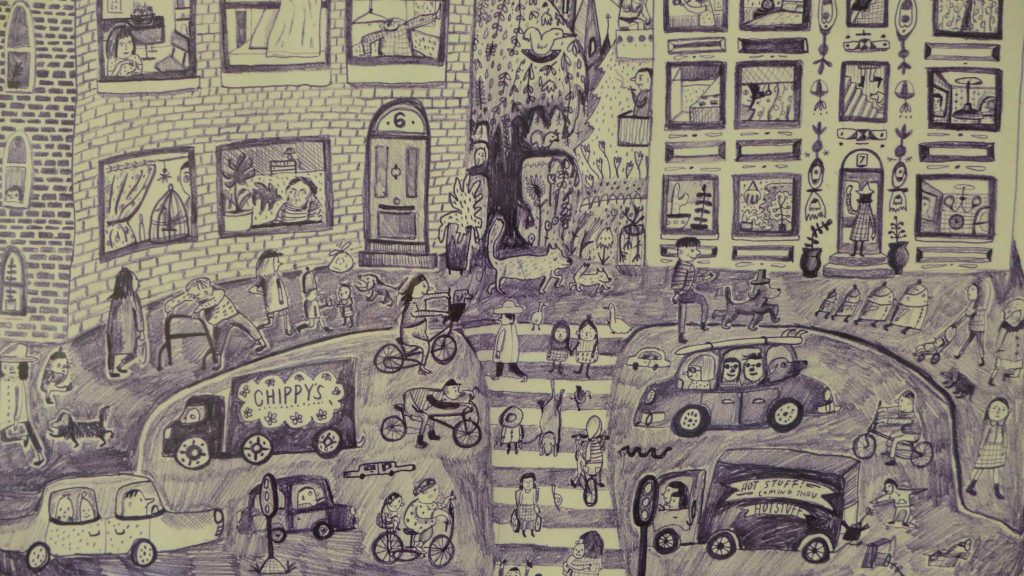
Illustration by Molly Dyson. Photo: Megan Spencer (c) 2016
I also think being based in the northern hemisphere has been good for work opportunities. I still do work for Australian clients but I also get a lot of inquiries from the UK, Europe and the USA. I think being here makes me more accessible as it’s only one hour ahead of London, or six hours ahead of New York.
Berlin is full of incredibly talented people from all over the world. The creative network is broad and far-reaching, and it’s approachable. And if you participate in it you become available to many different people who might want to collaborate or support your practice in some way. I feel incredibly lucky to be here.
Molly: I feel super lucky to be here too! I know so many people who have struggled, whose countries don’t afford them the same privilege of movement and travel as Australians have, and I feel very aware of my of privilege in Germany as a white educated Anglo-Saxon. Even though my German is still improving – and I am balancing work and study by supporting myself financially – I do feel better off here than I would in Australia. I couldn’t afford to do another undergraduate [degree] in Australia. The thought of ending up with a European university degree in design just makes me go “Wow!” – I can’t believe its happening! It’s great.
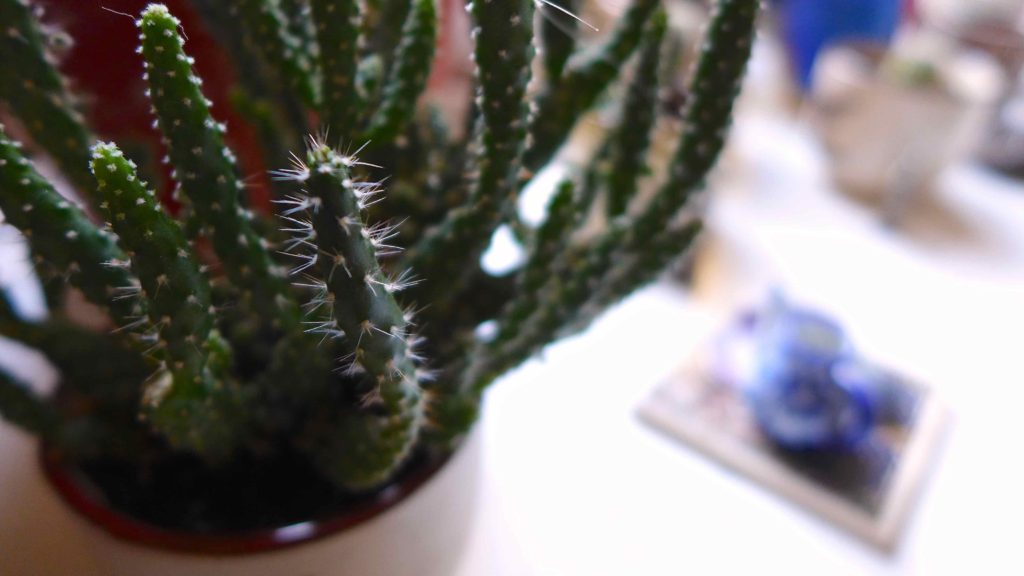
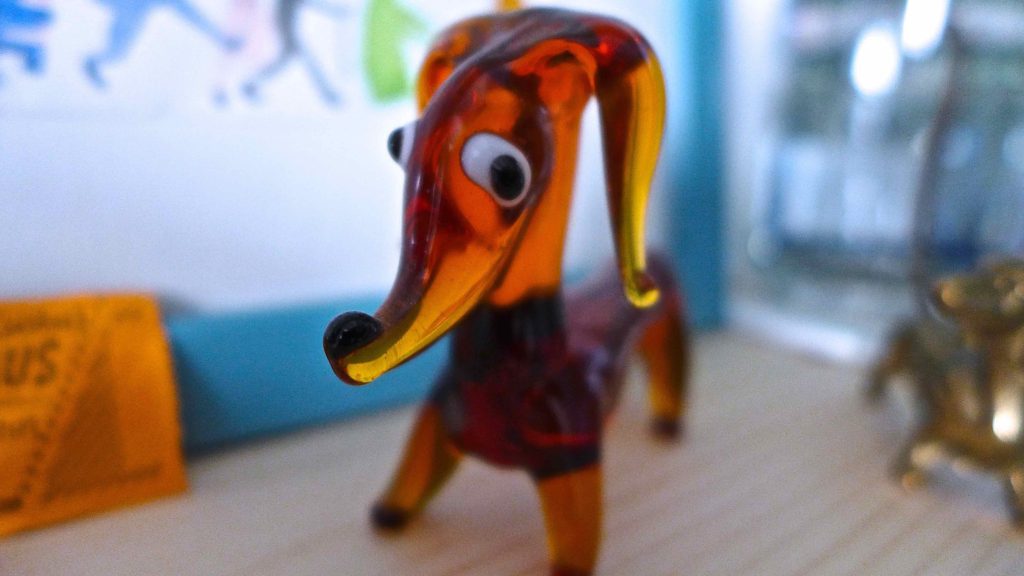
Things from Lucy’s sill & shelf collections. Photos: Megan Spencer (c) 2016
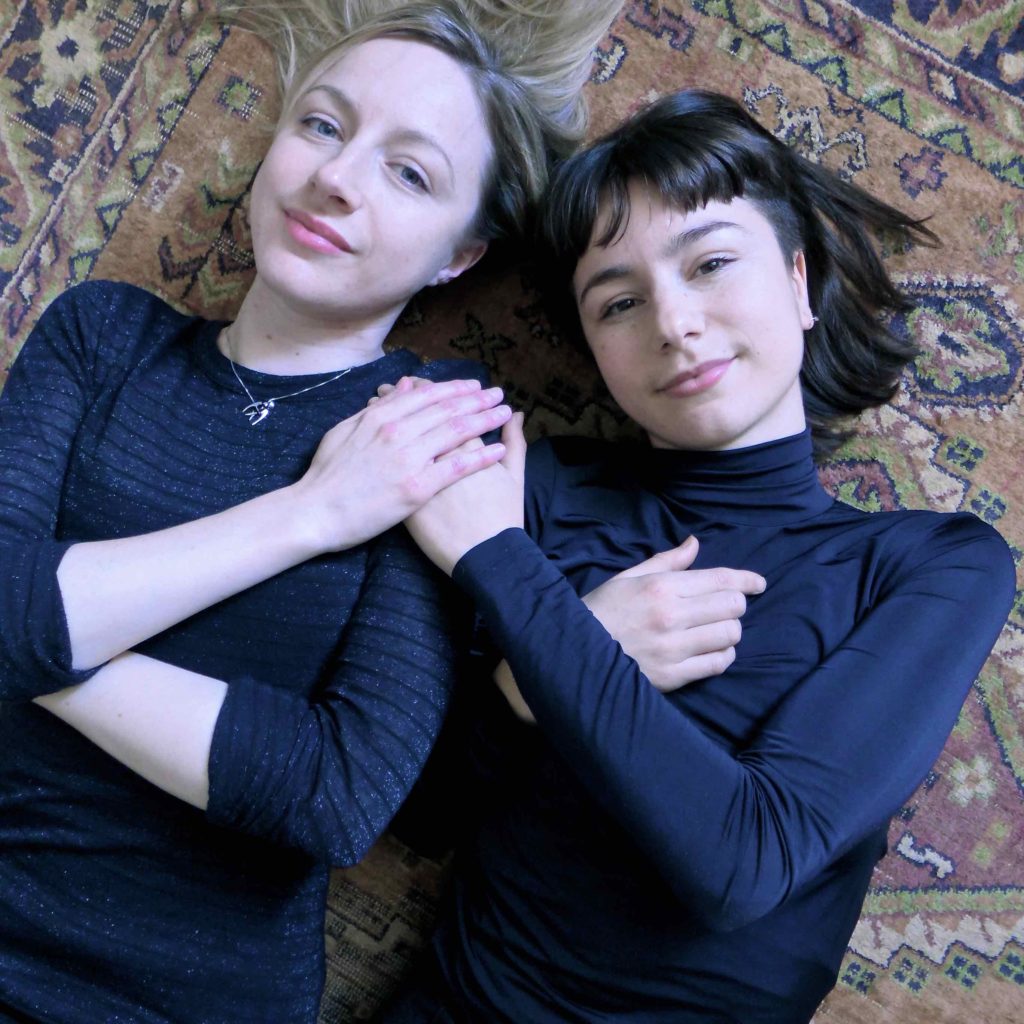
Lucy & Molly Dyson. Photo: Megan Spencer (c) 2016
Also as a design student in Europe there are so many more design agencies to intern or work for – and some amazing competitions and scholarships to apply for too. I have friends from all over the world at uni, and opportunities for projects keep presenting themselves, which just keeps blowing my mind.
Lucy: The city is wonderful, I love it: I think Berlin is the best city in the world.
Molly: The city does inspire my work. Mostly friends who live here inspire me because I know so many people making such fantastic stuff, it’s motivating to be around them.
CF: Are there any downsides for you?
Lucy: Being away from family and friends! Also, I don’t speak German terribly well (I practice everyday, but it’s taking forever). So some days that gets me down, but I’ve managed so far. Berlin is a very accommodating, accepting and forgiving city.
Molly: I get homesick! Speaking German is hard. I feel so far way from Australia and financially getting back there is really hard. Financially in general things are probably harder than they would be in Australia, but it’s also fine. I have everything I need – bread, butter, a warm house, friends and internet!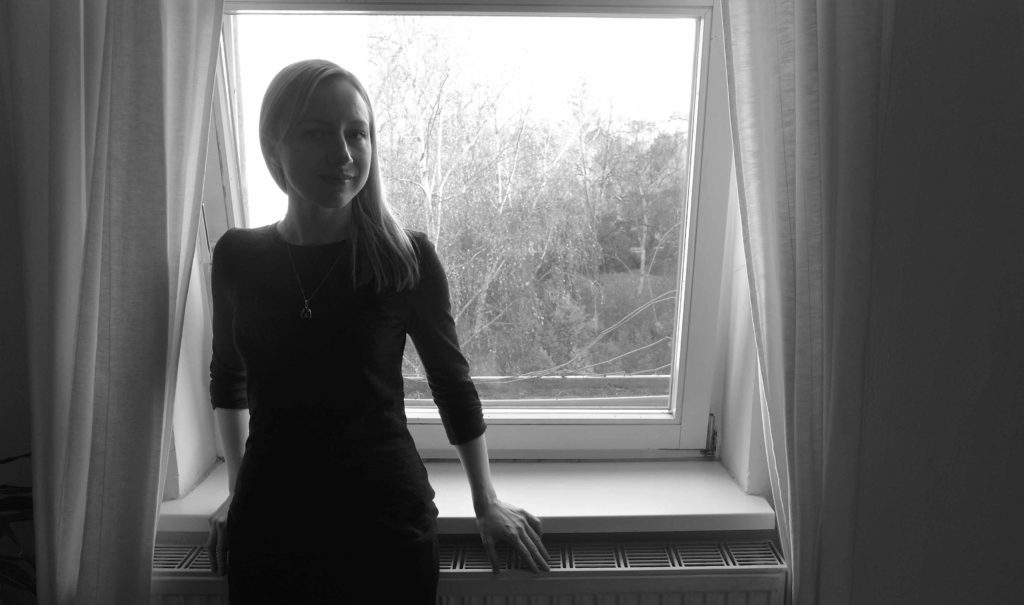
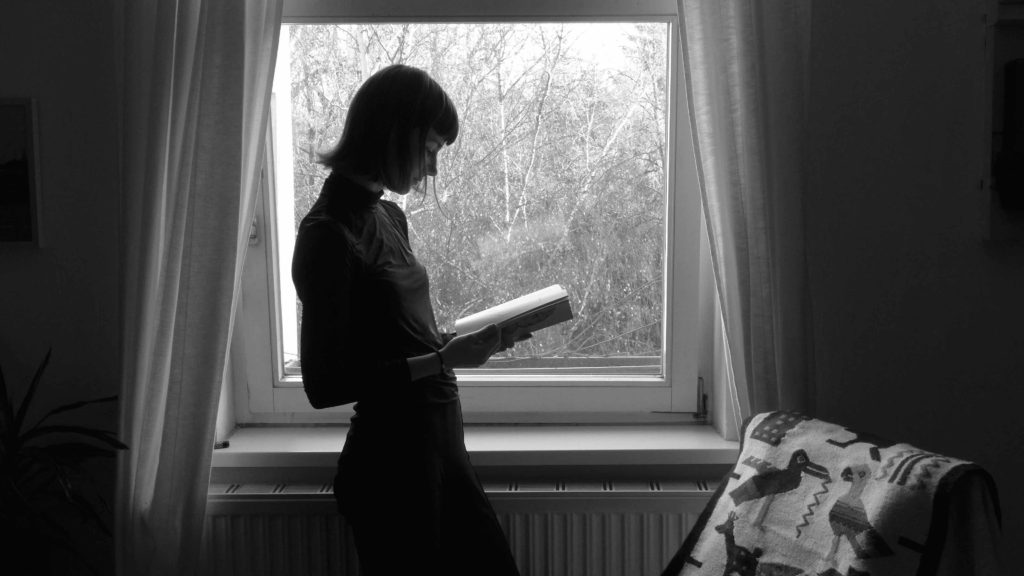
Shadowlands: Lucy & Molly in Berlin. Photo: Megan Spencer (c) 2016
CF: Is there anything in particular, that you have learned from your parents about being creative that you have never forgotten – that you have carried into your artistic practice and work?
Lucy: My Dad taught me to take as many opportunities as possible as they might not appear again, and this way you can work out what you’re really interested in. And to be resilient and humble, and to accept that not everything turns out as planned but that doesn’t mean you quit. You have to get over it, and practice everyday to improve and develop the skills – to hone in on something just the right way so that it works!
More recently my Mum told me not to “overthink things” or let my perfectionist tendencies take over, “as you probably don’t realise how good the work is”. Which was very nice of her – and a good reminder that it’s difficult to judge your own work.
Molly: I think self-belief is probably the key. When I tried to be a freelancer I just didn’t have the confidence, discipline or the skills to get it off the ground. I had some successes and made great work that I am totally proud of, but I didn’t have that particular drive that you really need if you’re going to make it work (like Lucy is!)
I feel way more confident now, and know that is something Mum and Dad always reminded all of the kids in the family to be. They totally support us and praise what we do whilst also giving very good critical advice and reality checks from time to time.
I know I am so lucky to have parents who don’t ask when I’m going to “buy a house” or “get married”. They are totally supportive of our decision to be creative even though they know how hard it is.
CF: Molly, you’re studying here in Berlin at Weißensee Kunsthochschule (art school.) Why did you choose to study here? What kind of experience are you having, say in contrast to studying in Australia?
Molly: I’m studying Graphic Design (Visuelle Kommunikation). Luckily I have been able to go straight into the second year because of the Bachelor of Fine Art I have from VCA in Melbourne. It was a more intense experience to apply [to get in] here than in Australia. Since German universities take a lot of international students, it’s more competitive, so the standards are pretty high!
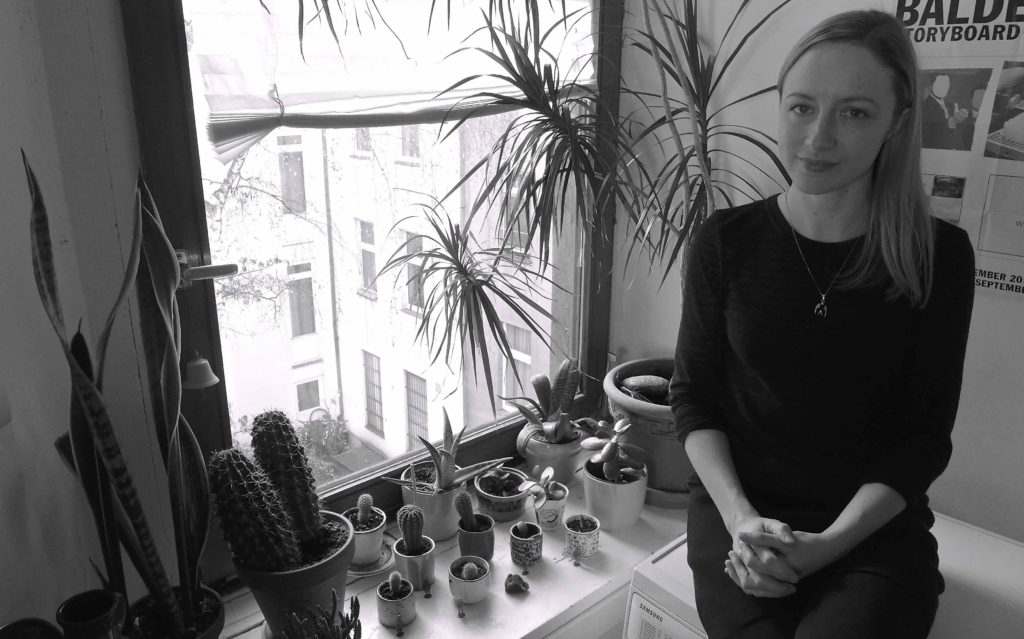
Lucy with her window sill cactus garden. Photo: Megan Spencer (c) 2016
There was a three-day-long ‘creative exam’ after the folios were selected, and that was super stressful. Not only because it (and the interview) was in German, but also because it was in a hall of about 30 people crafting away from nine-to-five for three days! I was sure I’d blown it, but I got in and I am very, very happy. The university is very self-oriented which suits me well since I had the learning curve of a freelance life. The uni has excellent workshops for printing, ceramics and woodwork, and has departments in Fine Art, Design, Fashion Design and Textiles.
The contrast to Australia is probably that Design and Fine Art feel more connected in Europe, whereas in Australia the worlds seem more separate. I know a lot of illustrators in Berlin who have practices that are very art-based, but they still work and refer to themselves as illustrators. Weißensee has this sort of mentality: that creative practice crosses many borders.
CF: What do you hope the degree at Kunsthochschule will give you in terms of opportunity? What is your “dream job”?
Molly: I hope to find a way to take what I do “to the next level”, in that I guess I’m just super-focused on getting more skills because part of the “failure” of my freelance illustration career (ha!) was my lack of skills to be able to refine what I was doing. That means refining my approach and becoming very aware – as a good designer should be – of all the elements of the project and pushing it all through to a super-high level of realisation.
As I said, being connected to an international community of creative people is amazing: watching what friends who are already pretty established designers and illustrators do is the best source of inspiration. I hope also to intern more and take advantage of the European student-bounty.
My “dream job” is probably in art direction. I am learning more and more how much I love working with other people and not so much alone at my computer (which is the lonely reality for most illustrators and designers). Seeing a project come together with a bunch of people is the best lesson I have learned in the last few years. So establishing an agency or working in a team of designers to produce large-scale projects is essentially “the dream”. I used to want to be a children’s book illustrator and I still do want to do that too! So I’m attracted to both huge and tiny projects.
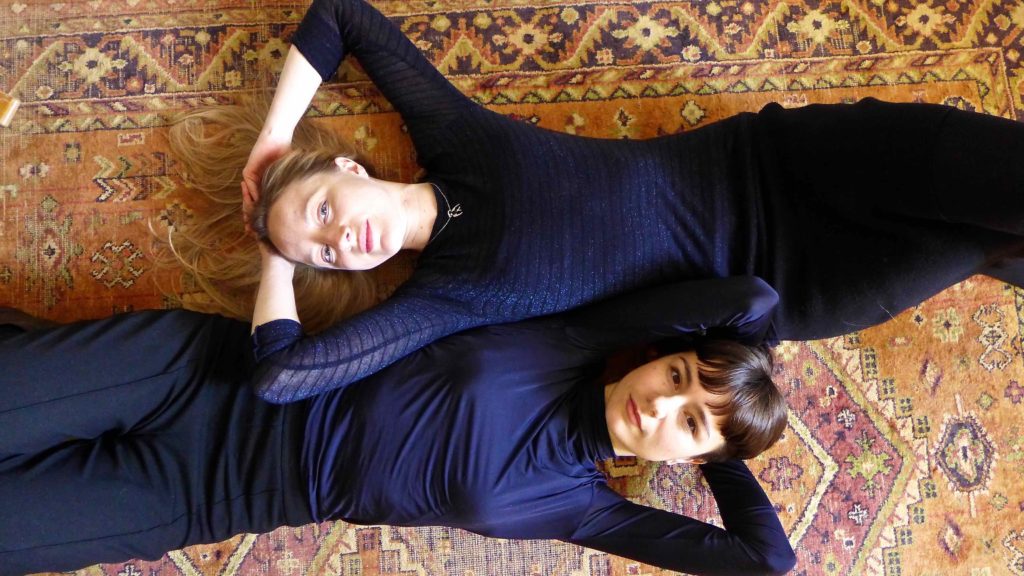
Photo: Megan Spencer (c) 2016
CF: Lucy – you and I recently talked about the concept of “flow”, being “in the zone” when you’re an artist. And you mentioned to me how elusive you feel it can be sometimes – that when it comes, you try to submerge yourself in it and stay there as long as you can, especially when you’re working on an animation project.
Would you explain that a bit further – and what your approach is to making animations?
Lucy: Sometimes when I’m completely absorbed in what I’m animating, it can feel like a weird jolt being brought back into the ‘real world’; I might need a moment to recall where I am. It’s very satisfying to experience, however I don’t find it so easy to achieve. I’m still a massive procrastinator and am easily distracted by the most stupid things.
I suppose it takes a lot of discipline which is also why if I am up against a deadline I can’t be taking social breaks that disturb that sense of flow and progress. To maintain momentum can sometimes mean working in solitude, dead-focused, for several days. My animation approach for music videos is to try to find the right pieces, as if I am putting together a jigsaw puzzle of images I see in my head when I hear the music. Sometimes I can’t see the images clearly and can only feel them as colours/shapes/movement. The puzzle pieces can be scattered across hundreds of different pages in stacks of books and piles of magazines and I usually don’t know what I’m looking for until I see it.
I try not to ‘over plan’ my projects as things tend to develop intuitively while I’m playing around with various elements.
CF: Where do you find your materials for making collages?
Lucy: Flea markets, secondhand book stores, rubbish bins, things I pick up off the footpath… I was recently late meeting Molly for a coffee as I found lots of things out on my street that I thought would be useful for a project, which I then had to carry back to my apartment before meeting her! It wasn’t the first time it’s happened; she is very forgiving of this habit of mine, as was my ex-boyfriend.
CF: Molly – what kind of an approach to do you have towards “making”?
Molly: My method is also constantly changing but basically I just sketch and refine and repeat. And then, depending on the project, I end up digitally adjusting elements of the drawing.
CF: Who are your personal art heroes – who inspires each of you? And do you inspire each other?
Lucy: The pop artist Marisol Escobar, the German artist Hannah Hoch, the Paris-based Canadian writer Mavis Gallant; all the female animators from the last 70 years (Mary Ellen Bute, Sally Cruikshank, Lotte Reineger, Faith Hubley); my good friend Isobel Knowles, and so many remarkable women turning out exquisite work as independent animators and experimental film makers, who are relentlessly doing their thing!
Also my good friend Gemma Ray; she is a Berlin musician. We often discuss and share where we are at with our work and actually have similar approaches to creativity, and understand if the other has to isolate herself in the studio to make some headway on a project.
Of course Molly inspires me, not only for her brilliant artistic skills and the sense of humour in her work, but her German is so good (which makes me feel very lazy). And the fact she got into art school here – no easy accomplishment!
Molly: Yes, Lucy totally inspires me… I’m also inspired by other illustrators I have met in Berlin: Maren Karlson, Lasse Wandschneider and Aisha Franz are huge inspirations. I constantly refer back to Herve Leger’s paintings, Thomi Ungerer for his children’s books, and [Moomintroll author and illustrator] Tove Janson‘s artwork and writing.
CF: Lucy – last year you “got the call” from Beyoncé (well, her people I’m guessing!), who wanted to commission an animated collage projection from you, for her Formation world tour. You’ve also worked with big names in Australia like Paul Kelly, Goyte, The Drones… When those calls finally come – after years of perhaps working isolation, wondering if anyone is even out there or taking notice – how does it feel?
Lucy: It’s validating. I work alone and without an agent. I can be quite passive about seeking out work (unless I discover something and it’s so on my wavelength I’m compelled to reach out.) I’m usually working on projects that come to me, so it is remarkable that simply by having my work online has brought in some of these opportunities.
I feel satisfaction, gratefulness and relief! But the moment I actually start working on whatever the brief is, or whatever I have proposed to do, I think “Hmmm, I wonder what we’ll actually end up with…” There is always the risk I could mess something up, and as the only person responsible – it can be a lot of pressure!
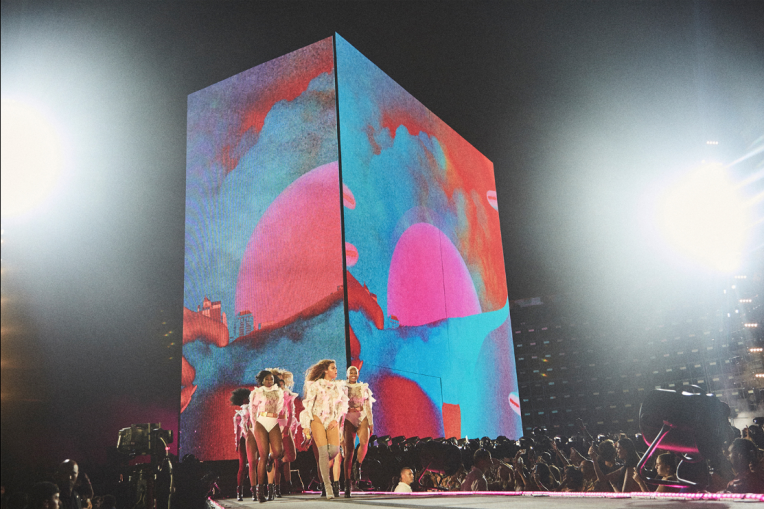
Photo from beyonce.com of Lucy’s projection work for the The Formation World Tour, Tampa, FL.
CF: What are some of your favourite projects you have done so far?
Lucy: In terms of scale obviously Beyoncé was my favourite. I would like to do more ‘monolithic world tour’ animations, and working with her huge creative team was exciting. Otherwise – all my projects! I love them all. They each remind me of what was going on in my life while making them: what was going wrong and right, what I didn’t know then that I know now, how one project led to something else…
For these reasons I don’t have a “favourite”: I’m still waiting to produce something that I think works perfectly and looks effortless. Ideally it will take the form of a short film.
CF: As sisters, how do you support each other in your artistic endeavours? Do you talk about your practice and work much?
Lucy: We talk about our practice, offer practical advice and sometimes aesthetic feedback. It’s useful to have a fresh pair of eyes take in your work. Molly and I know where each other is coming from, and while I don’t think it would be in either of our natures to say if we thought the other’s work was looking like rubbish, we can offer each other respectful and useful feedback. We’re nice to each other and supportive.
Molly: Yes, we often give each other advice and feedback, and we are always very excited to share our projects and progress with each other. Usually one of us can pick up on something the other one hadn’t noticed or thought about. So there is a lot of support.
CF: Have you worked together before – or thought about working together? If so, what project might you make together? What might – if I can call it – say, a ‘Dyson & Dyson’ exhibition look like here in Berlin?!
Lucy: No! I think we have considered it, but I think it’s also good that we are forging our own paths. I think it would be fun to collaborate with Molly on some collages and an animation.
I am intrigued by sibling collaborations, like The Beach Boys and animators The Brothers Quay. But I’m not sure Molly and I see it as a marketing angle that we would employ!
Sometimes it’s fun to not say anything and let people work out the sibling connection themselves, especially if they then ask who is older or younger…
Thank you Molly and Lucy for such an interesting interview, a generous, graceful shoot and the Saturday morning Vegemite on toast : )
* * *
- Interviews: Lucy Dyson, Molly Dyson
- Words/edit/photos: Megan Spencer
- Visit: Lucy’s website to see her collages, videos and portfolio.
- Visit: Molly’s website to her illustrations, projects and portfolio.
- Follow: Lucy on Instagram
- Follow: Molly on Instagram
- Read an interview with Molly on Grilling Me Softly
- Watch: Lucy’s music video for Bernard Fanning and her short Laika – Space Dog.
- View: my full photo essay on SmugMug
- Watch: this video by The Carpenters
- Read: my interview with Australian collage artist Karen Lynch.
